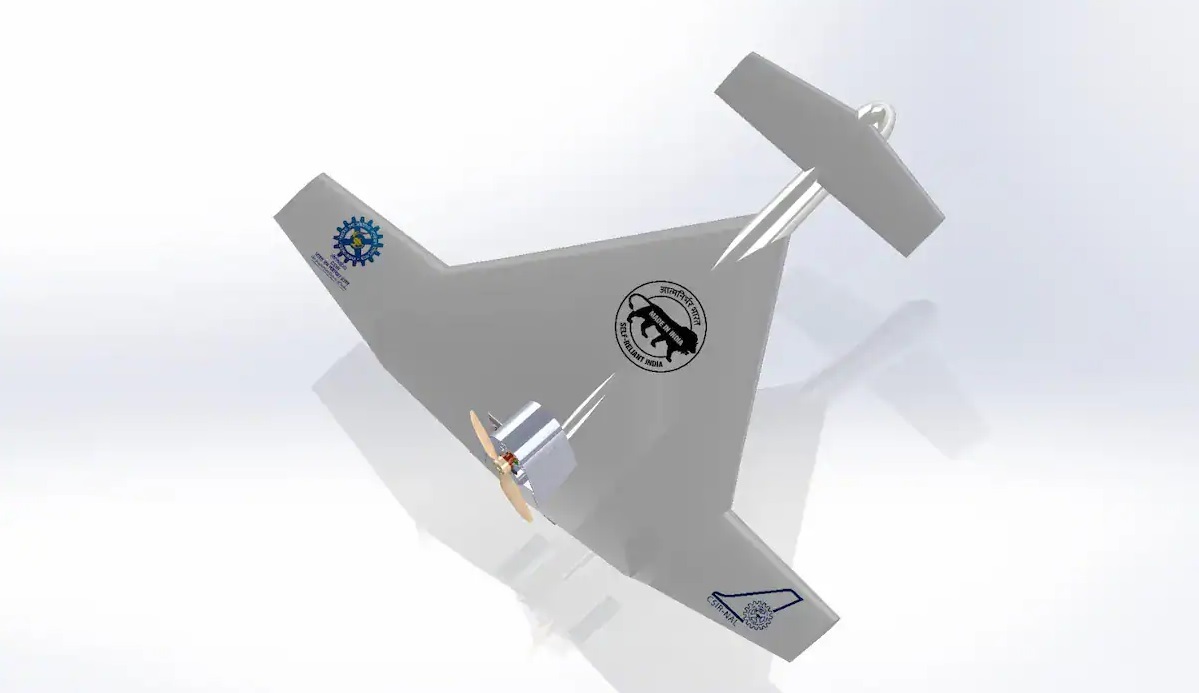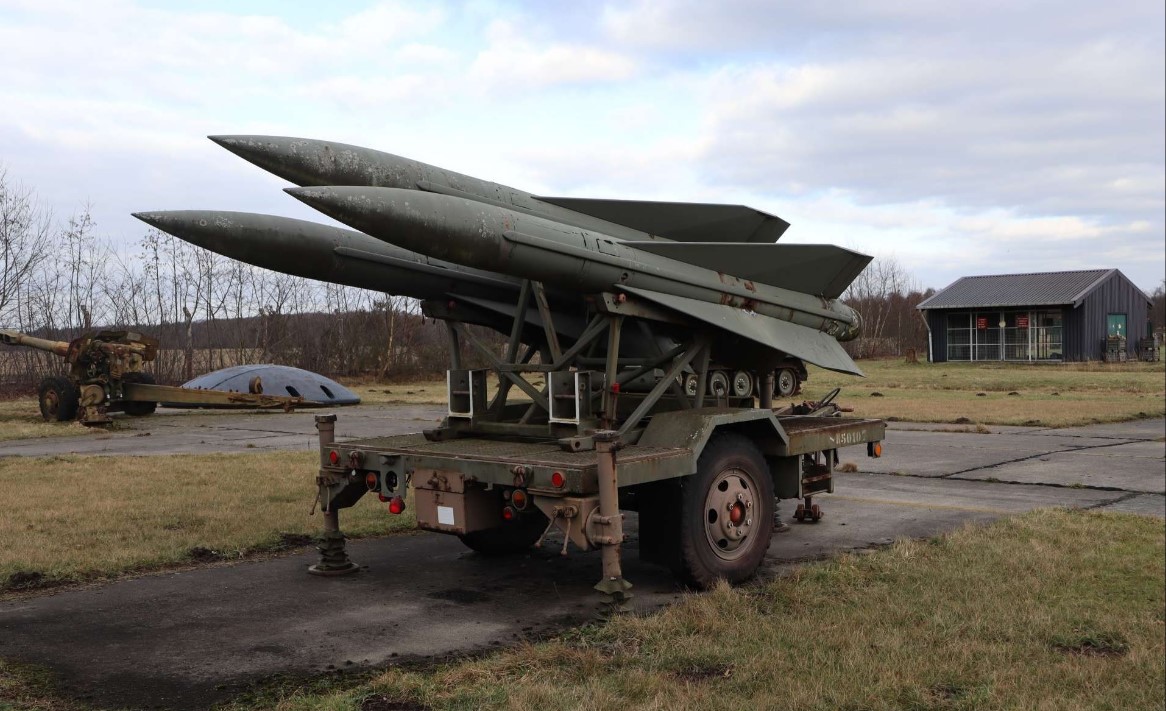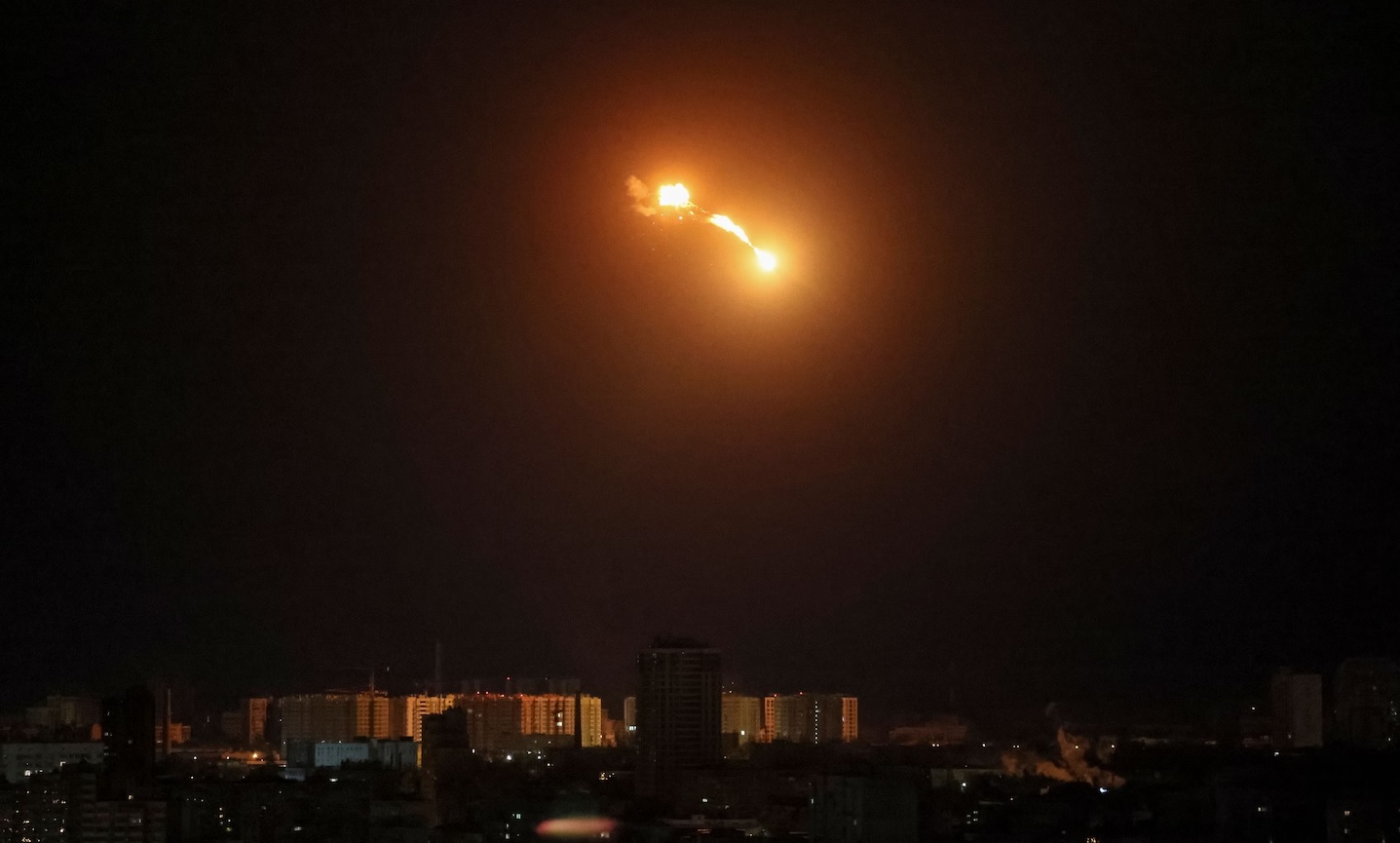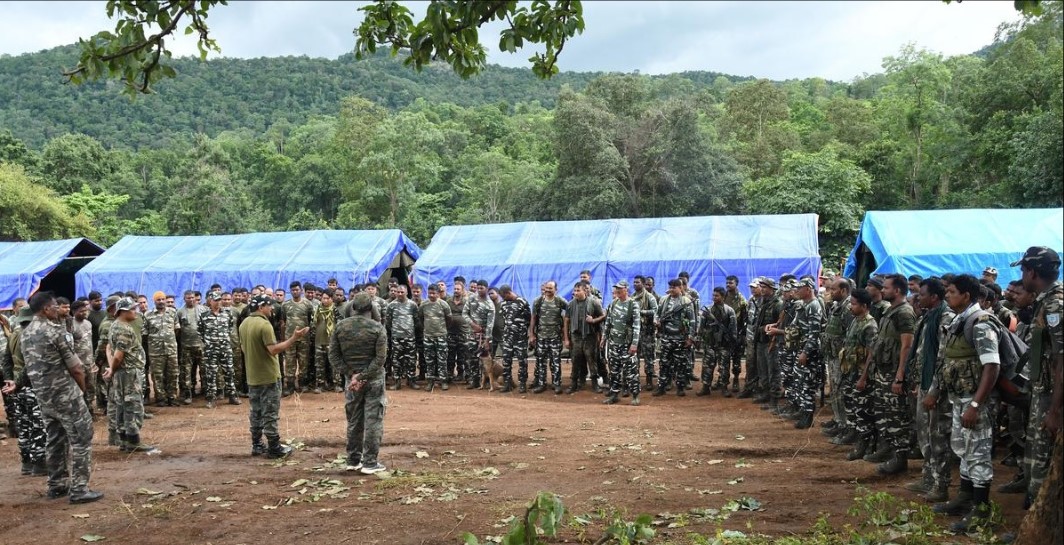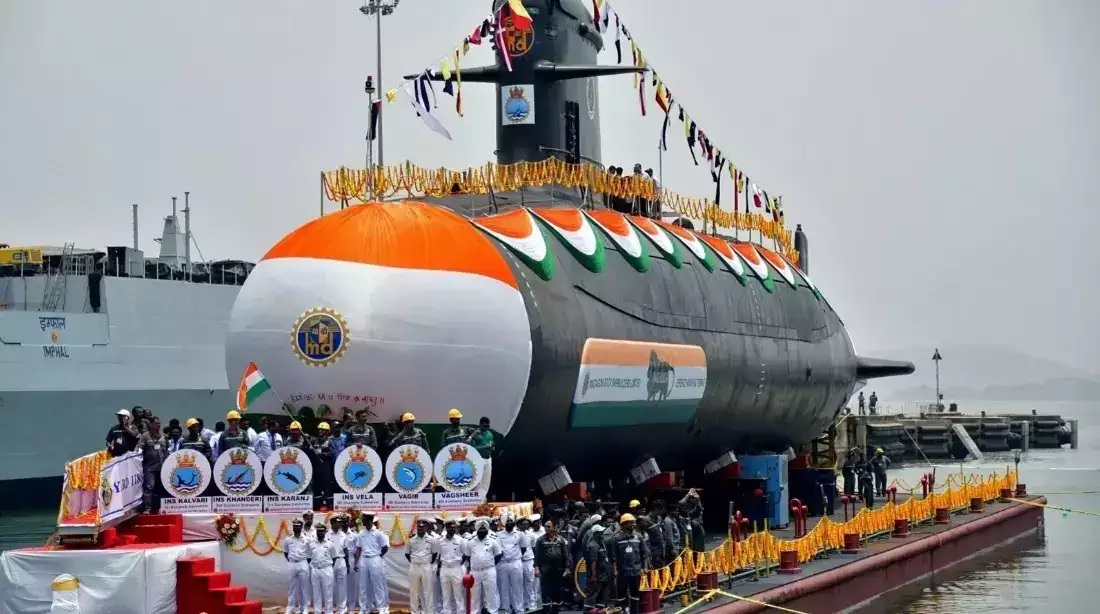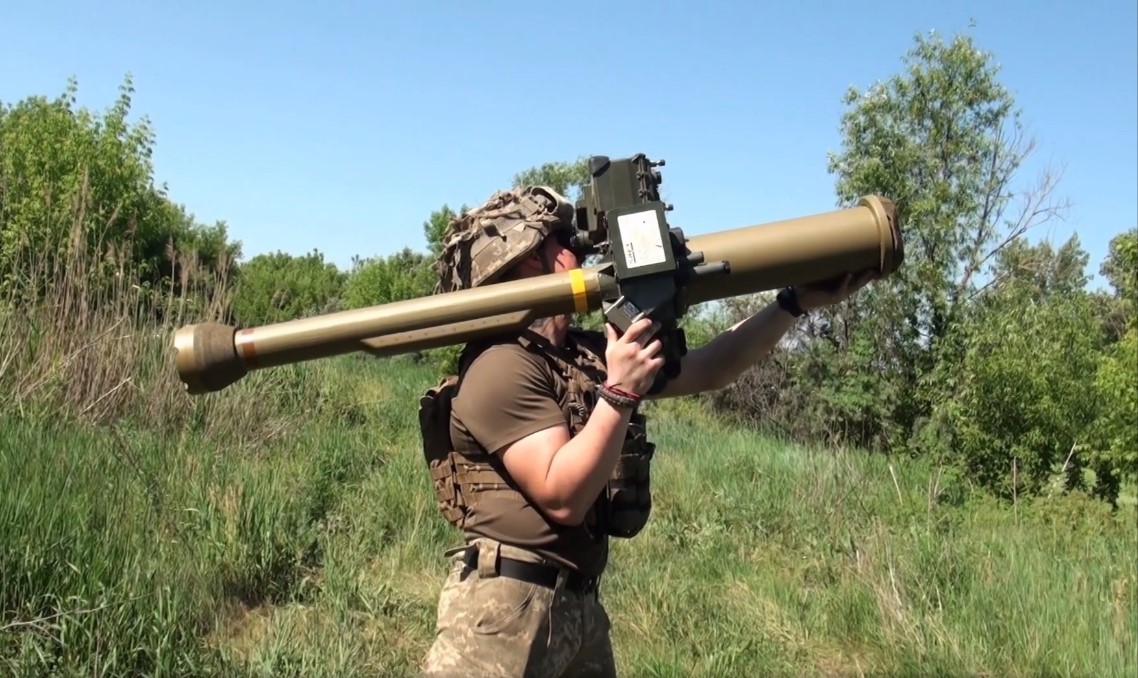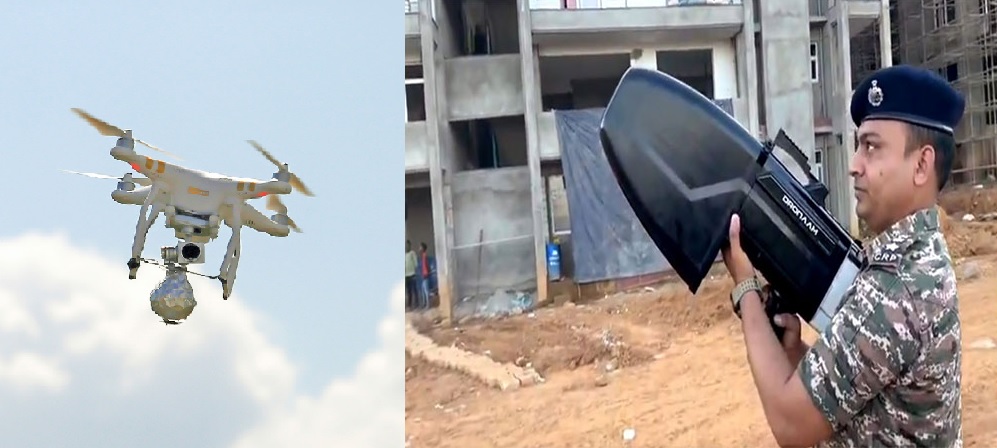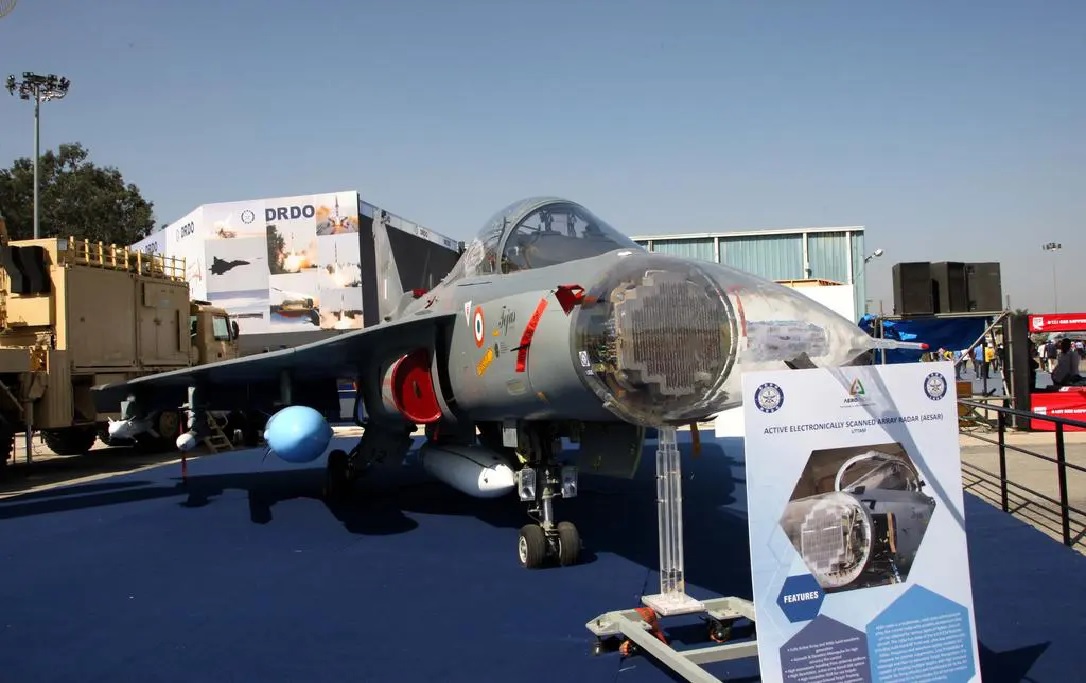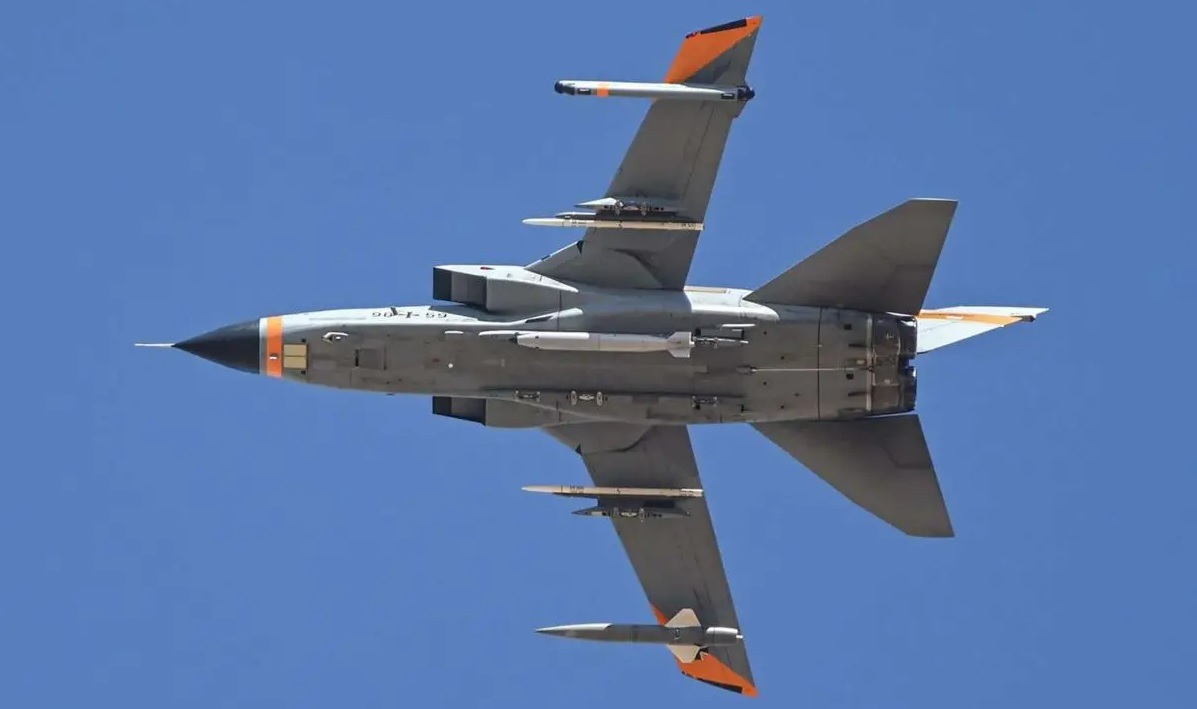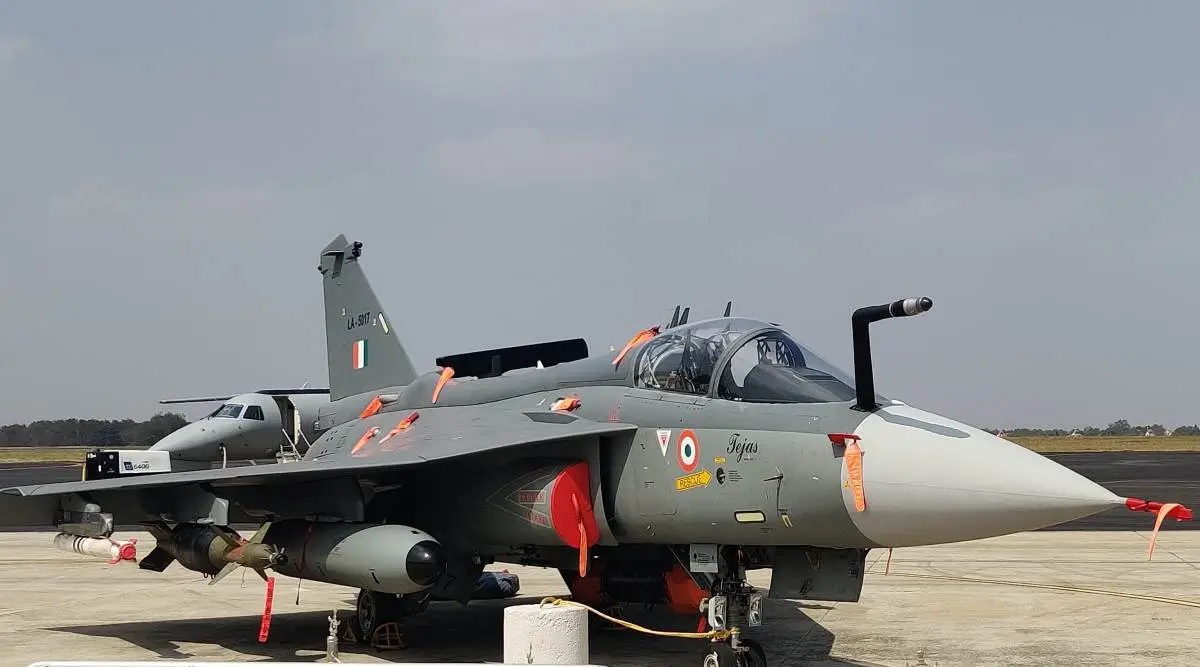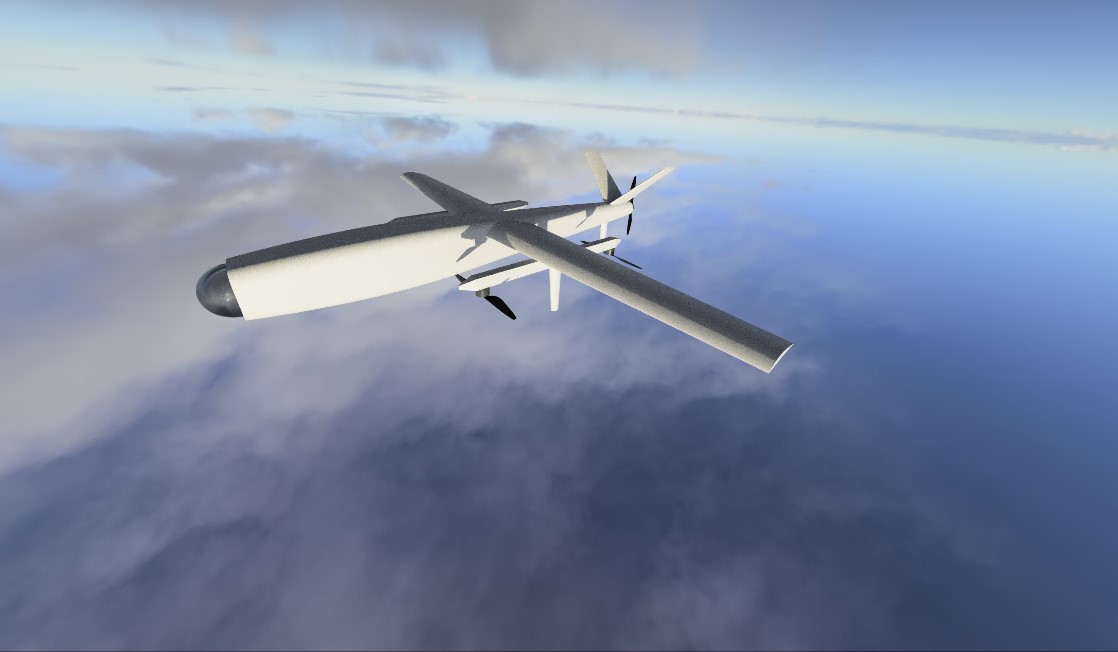India
The National Aerospace Laboratories (NAL) has set its sights on advancing India's defense capabilities with an ambitious project involving the development of a 150kg loitering munition (LM) UAV. This indigenous drone is designed for precision strikes and high-level surveillance, combining cutting-edge technology with tactical versatility. To achieve this, NAL is inviting private sector participation to collaborate in the development, manufacturing, and commercialization of the UAV, marking a significant step in India’s push towards self-reliance in defense technologies.The project, with an estimated cost of ₹102 crore, demonstrates NAL's deep commitment, with the laboratory contributing ₹64 crore. The joint venture aims to build 10 prototypes of this loitering munition, which will be key in bolstering India's aerial strike and surveillance capabilities. What sets this UAV apart is its ability to linger over potential targets, waiting for the perfect moment to strike, making it a game-changing weapon in modern warfare.At the heart of this UAV is a powerful 30hp Wankel engine developed in-house by NAL. This engine is engineered for efficiency and reliability, ensuring that the drone can cover vast distances with an impressive endurance of 6-9 hours. The UAV boasts a range of 900 kilometers and a service ceiling of 5,000 meters, making it capable of operating in diverse environments. Its ability to carry a 15 kg warhead, in addition to other payloads such as advanced sensors, positions it as a versatile tool for both offensive and intelligence-gathering missions.To enhance its surveillance capabilities, the UAV will feature a cutting-edge Electro-Optical/Infrared (EO/IR) sensor gimbal. This sensor system allows for high-resolution imaging and tracking, even in low-light or challenging weather conditions. Additionally, the UAV will be equipped with a 200-kilometer line-of-sight communications link, enabling seamless real-time data transmission between the drone and ground control stations. One of the standout features of this UAV is its ability to navigate in GPS-denied environments. In today’s warfare, GPS signals can be easily jammed or disrupted, rendering many systems ineffective. However, NAL’s UAV will be designed to operate independently of GPS signals, ensuring continued functionality even in electronic warfare scenarios. The stealth design elements of the UAV further reduce its detectability, giving it a tactical edge in enemy airspace.NAL’s invitation to the private sector isn’t just about development. The chosen partner will have a pivotal role in the design, testing, and refinement phases of the project. Upon successful completion, this partner will have the first right to manufacture, market, and provide after-sales support for the UAV. Essentially, the collaboration offers a significant business opportunity for private players to enter a growing defense market where loitering munitions are gaining global importance.Loitering munitions are increasingly seen as a more efficient alternative to traditional missiles and aircraft in modern warfare. These drones can hover over enemy territory, collecting intelligence and waiting for the right time to attack, which makes them both flexible and deadly. Their ability to perform both reconnaissance and strike roles in a single mission has made them invaluable in conflict zones around the world.The project has already attracted attention, with a pre-bid conference set for September 23, 2024. Interested parties have until October 22, 2024, to submit their technical offers. This development could reshape India's defense landscape, offering a highly sophisticated aerial platform capable of precision strikes, surveillance, and overcoming electronic warfare challenges.This joint venture signifies a new era in India's defense innovation, where public-private collaboration can lead to technological advancements that not only strengthen national security but also position India as a significant player in the global defense market.
Read More → Posted on 2024-09-09 16:05:56Space & Technology
SpaceX's ambitious plans to colonize Mars are edging closer to reality. According to SpaceX founder and CEO Elon Musk, the company is setting its sights on launching Starship missions to Mars as early as 2026. This timeline marks a significant milestone in humanity’s quest to become a multiplanetary species.Elon Musk recently outlined these plans on social media, stating that the initial missions will be uncrewed. These test flights will focus on validating the Starship's capability to land safely on Mars. If successful, crewed missions could follow within four years, leveraging the roughly 26-month intervals during which Earth and Mars align favorably for interplanetary travel.The Starship system is a marvel of engineering. It features two main components: the Super Heavy booster and the Starship spacecraft. Together, they form a towering rocket system approximately 400 feet (122 meters) tall. The Super Heavy booster, which is the first stage, and the 165-foot-tall (50 meters) upper-stage Starship are crafted from stainless steel, a material chosen for its durability and resistance to extreme temperatures.Starship's design is revolutionary, boasting a thrust of 16.7 million pounds at launch—nearly double that of NASA's Space Launch System (SLS) used for the Artemis missions. Unlike the SLS, which is expendable, the Starship is engineered for full reusability. SpaceX's plan includes landing the Super Heavy booster back on the launch pad for quick refurbishment, significantly reducing turnaround time between missions.Musk’s vision extends beyond just reaching Mars. He aims for a rapid expansion in flight frequency and ultimately envisions establishing a self-sustaining city on Mars within about 20 years. He argues that achieving a multiplanetary presence will dramatically enhance the survival prospects of human consciousness, reducing our dependency on a single planet.SpaceX’s progress towards these goals will be closely watched by space enthusiasts and experts alike. The upcoming Mars missions represent a bold step forward in space exploration, pushing the boundaries of what humanity can achieve.
Read More → Posted on 2024-09-08 15:50:12World
Ukraine has recently showcased the effectiveness of the vintage MIM-23 HAWK air defense system in intercepting Russian cruise missiles and one-way attack drones. Despite being a Cold War-era technology, first deployed by the U.S. Army in 1959, the HAWK system is making a significant impact in protecting Ukrainian cities and infrastructure from aerial threats.The HAWK’s resurgence on the battlefield began when Spain transferred six launchers to Ukraine in the fall of 2023. Along with these launchers, 64 Ukrainian personnel underwent intensive training to operate the system. As the Russian missile campaign escalated, other NATO allies, including the United States, also contributed additional HAWK units to Ukraine's air defense capabilities. The decision to deploy this system was strategic, despite its age, and it has turned out to be a pivotal tool in countering Russian missile strikes.One reason for the HAWK's effectiveness lies in its modernization. Ukraine is primarily using the Improved HAWK Phase III variant, which boasts upgraded radar, missile tracking systems, and fire control technology. This variant allows Ukrainian forces to engage threats with high precision. Since its deployment, one HAWK unit has reportedly taken down 14 Russian cruise missiles and 40 Iranian-made Shahed drones, which are often used in kamikaze attacks.The HAWK system, with a range of 45 kilometers, is particularly effective against low- to medium-altitude threats, including drones and cruise missiles. Its phased-array radar and semi-active radar homing guidance ensure accurate missile tracking, even in challenging environments. Ukrainian defense experts, such as Taras Chmut, have praised its performance on platforms like X (formerly Twitter), where they highlighted how well both the HAWK and the Soviet-era S-125M systems are performing in air defense roles.The MIM-23 HAWK has a long combat history, having been used in various conflicts across the Middle East and beyond. While its technology dates back over six decades, western analysts estimate its success rate at 85%. Ukrainian forces, benefiting from modern training and advanced targeting methods, believe that the HAWK is even more effective under their operation, potentially achieving higher success rates.The reintroduction of the HAWK system into active conflict not only reflects Ukraine’s innovative use of available resources but also highlights the enduring value of legacy defense technologies. As Russian missile attacks continue, the HAWK has proven to be a reliable and effective shield, playing a vital role in Ukraine's broader air defense strategy. By integrating this vintage system into their modern defenses, Ukraine has shown that even decades-old equipment, when properly maintained and upgraded, can be a crucial asset in contemporary warfare.
Read More → Posted on 2024-09-08 15:41:45World
Russia's military has pushed forward in eastern Ukraine, claiming significant territorial gains, while Ukrainian forces and cities face intensified Russian air strikes. The conflict, now stretching into its third year, is reaching new levels of escalation with both nations ramping up their offensive strategies.On Sunday, Russian forces announced they had advanced in the Donetsk region, a vital part of Moscow’s objective to fully control eastern Ukraine’s Donbas. Moscow claimed to have captured the village of Novohrodivka, a small but strategic settlement located about 20 kilometers from the logistics hub of Pokrovsk. This move marks Russia’s most substantial territorial gain since early in the war, signaling a shift in momentum after months of intense fighting.As Russia intensified its offensive in the east, deadly air strikes continued to wreak havoc across Ukrainian territory. In the northern city of Sumy, a Russian air strike killed two people and injured four others, including two children. Sumy, located near Ukraine’s border with Russia, has been a hotspot for cross-border clashes as Ukrainian forces continue their efforts to push Russian troops back. Ukrainian authorities condemned the attack, citing it as yet another example of Russia’s indiscriminate violence against civilians.Further south, in the Donetsk region, a Russian rocket strike on a village near the front lines killed two women in their gardens. The regional prosecutor’s office reported that the attack used cluster munitions, a weapon that has been widely criticized for its devastating impact on civilians.Russia’s advances in the Donetsk region come as Kyiv launched its own offensive across the Russian border in the western Kursk region earlier in August. This Ukrainian counter-offensive is aimed at forcing Russia to redeploy its forces away from eastern Ukraine. Despite Ukraine's efforts, Moscow has escalated its attacks, making advances toward its larger goal of capturing the entire Donbas region.Russian President Vladimir Putin recently reiterated his commitment to capturing the Donbas, claiming that Ukraine’s ongoing Kursk offensive had inadvertently helped Moscow achieve its objectives. The Russian military’s success in capturing Novohrodivka is seen as part of this broader push.Meanwhile, Ukrainian President Volodymyr Zelensky has been urging Western allies to provide Kyiv with more advanced weapons to strike targets deeper inside Russia. Zelensky highlighted the scale of Russia’s recent aerial campaign, which has included over 800 guided bombs, 300 Shahed drones, and more than 60 missiles targeting Ukrainian cities and infrastructure. His calls for increased Western military support include lifting restrictions on using longer-range missiles, which could allow Ukraine to target Russian airfields and logistics hubs more effectively.One of Zelensky’s key points is that targeting Russian military installations inside Russia itself is necessary to halt the relentless aerial bombardment of Ukrainian cities. Kyiv has already carried out limited retaliatory strikes, including a drone attack on an ammunition depot in Russia’s Voronezh region. Ukrainian forces have also targeted Russian oil depots and refineries, crippling key supply chains that fuel Russia’s war machine.Despite these efforts, Russia has launched some of its deadliest strikes in recent weeks. A missile strike on a military education facility in Poltava last week has now claimed 58 lives, as some of the wounded succumbed to their injuries. In Lviv, a rare strike on the western city, far from the frontlines, left seven people dead last week.Ukraine’s leaders continue to emphasize their right to defend against Russian aggression, citing Article 51 of the United Nations Charter, which permits a nation to protect itself from attack. Kyiv insists that any restrictions on targeting Russian military assets within Russia’s borders only hinder Ukraine’s ability to stop further Russian aggression.As the war escalates, the international community watches closely, with the conflict's trajectory increasingly uncertain. With Russia making strides in eastern Ukraine and Ukraine pushing for more advanced retaliatory capabilities, the war shows no signs of slowing down. The stakes are higher than ever, with both nations locked in a deadly battle for control over the future of Ukraine.
Read More → Posted on 2024-09-08 15:39:00World
In a major move to counter the lingering threat of Naxalism in Chhattisgarh, the Central Reserve Police Force (CRPF) has deployed over 4,000 troops to the violence-stricken Bastar region. This strategic action is part of the Indian government's intensified efforts to eradicate Left Wing Extremism (LWE) by March 2026. The campaign, endorsed by Union Home Minister Amit Shah, reflects the government’s determination to bring an end to the decades-long Maoist insurgency that has plagued the country’s central and eastern states.The CRPF has withdrawn four battalions—three from Jharkhand and one from Bihar—where Naxal activity has decreased significantly in recent years. These battalions, comprising the 159, 218, 214, and 22 units, will now focus on Chhattisgarh’s most volatile zones. Bastar, particularly the districts of Dantewada and Sukma, has remained a hotspot for Naxal operations, making it the central theater for the upcoming decisive battle.The CRPF, the nation’s lead internal security force, has built a network of forward operating bases (FOBs) over the past few years, securing key regions and enabling developmental initiatives to follow. However, setting up these bases in remote areas is risky, with frequent ambushes and improvised explosive device (IED) attacks by Naxal militants. To support these new deployments, the CRPF has bolstered its forces with armored vehicles, UAVs (unmanned aerial vehicles), and dog squads to navigate and secure these “no-go” areas.One of the biggest challenges facing the security forces in Chhattisgarh is the hostile terrain of south Bastar, where Maoist militants often employ guerrilla tactics, taking advantage of the dense forests and difficult-to-access regions. These areas, located near the tri-junction border of Odisha, Andhra Pradesh, and Telangana, have proven to be strongholds for Naxal fighters.The CRPF has also activated its CoBRA (Commando Battalion for Resolute Action) units in these operations, reinforcing efforts to eliminate militant hideouts. These elite units, trained in jungle warfare, have been critical in previous anti-Naxal campaigns, and their role is expected to be pivotal in the upcoming actions.However, this military push goes beyond just boots on the ground. The government has emphasized that infrastructure, particularly roads and helipads, will play a critical role in ensuring the success of these operations. Improved logistical capabilities are essential for maintaining the new positions in remote areas, allowing for faster troop movement, supply deliveries, and medical evacuations when necessary.The Bastar region has long been the most dangerous zone for anti-Naxal operations, with security forces suffering heavy casualties over the years. Yet, the overall Naxal violence across the country has declined by more than 50% in the past decade. Between 2004 and 2014, India saw over 16,000 Naxal-related incidents; this number dropped to 7,696 in the following decade under Prime Minister Narendra Modi’s government. Deaths due to Maoist violence have also seen a sharp decline—from 6,568 during 2004-14 to 1,990 in 2014-24.While the government is optimistic about meeting the 2026 deadline, senior officials acknowledge that continuous resource support—both in terms of technology and manpower—will be crucial to maintaining momentum. Helicopter and drone support, in particular, are essential to cover the vast, rugged terrains where Naxals operate.The CRPF’s top leadership is determined to lead the charge in this final push. Having already deployed around 40 battalions in Chhattisgarh, including the newly arrived troops, the force is now more committed than ever to hammering the "last nail in the coffin" of Left Wing Extremism. Recent operations have led to the deaths of over 150 Naxal militants in 2024 alone, a sign that the intensified efforts are already showing results.With the Indian government setting its sights on a March 2026 deadline, this massive redeployment of CRPF troops marks a critical juncture in the fight against Naxalism. If successful, it will not only bring an end to one of the country’s longest-standing insurgencies but also pave the way for peace and development in the affected regions.
Read More → Posted on 2024-09-08 15:34:56India
India’s role as a potential mediator in the ongoing Russia-Ukraine conflict is gaining global attention, with National Security Advisor (NSA) Ajit Doval heading to Moscow this week to engage in critical discussions aimed at resolving the crisis. Doval's visit follows the diplomatic groundwork laid by Prime Minister Narendra Modi, who has taken personal initiative in mediating between Russia and Ukraine over the past months.PM Modi's approach has been a delicate balancing act. He visited both Moscow and Kyiv in July and August, respectively, holding meetings with Russian President Vladimir Putin and Ukrainian President Volodymyr Zelensky. His efforts underscore India’s unique position—trusted by both Russia and Ukraine—as a possible mediator in the conflict. During these trips, Modi underscored the importance of diplomacy and peaceful dialogue, aligning with India’s longstanding position of advocating for non-violent resolutions to global conflicts.After his visit to Ukraine, Modi made a follow-up phone call to Putin on August 27. According to a statement from the Russian Embassy, Modi briefed Putin about his discussions with Zelensky and reaffirmed India’s dedication to bringing a political and diplomatic solution to the conflict. It was during this call that the idea of sending NSA Ajit Doval to Moscow was discussed and agreed upon.The upcoming Moscow visit is part of a broader effort by India to play a key role in facilitating peace talks between Russia and Ukraine. Doval's trip coincides with his participation in the BRICS NSA meeting, where top security officials from Brazil, Russia, India, China, and South Africa, along with new BRICS members including Saudi Arabia, the UAE, and Iran, will convene ahead of the annual BRICS Summit in Kazan. While the official agenda includes BRICS security matters, sources indicate that Doval's primary focus in Moscow will be on the Ukraine conflict. There are expectations that bilateral talks will also take place, notably with his Chinese counterpart, Wang Yi. The involvement of multiple global powers like China and Brazil adds another layer to the complexity of the negotiations. However, India remains in a unique position, being seen as a neutral player with strong relationships with both Russia and the West.Doval's visit also comes on the heels of international recognition of India's potential role as a mediator. Italian Prime Minister Giorgia Meloni, during a meeting with Ukrainian President Zelensky at the Ambrosetti Forum in Italy, noted that countries like India and China could play pivotal roles in resolving the Ukraine conflict. This sentiment was echoed by President Putin, who, during the Eastern Economic Forum in Vladivostok, acknowledged the efforts of countries like India in offering a "helping hand" toward peace.India's diplomatic strategy in this conflict has been clear: maintain good relations with both Russia and Ukraine, while advocating for peace through dialogue. Modi’s outreach, coupled with Doval’s forthcoming Moscow visit, reflects India's deep commitment to finding a peaceful resolution. As world leaders watch closely, India's role in the peace talks could significantly shape the future trajectory of the conflict in Ukraine.
Read More → Posted on 2024-09-08 15:22:59India
India is set to make a major leap in its naval capabilities with the integration of an indigenously developed Air Independent Propulsion (AIP) system into its Scorpene-class submarines. The news, announced by Dr. Samir V Kamat, Chairperson of the Defence Research and Development Organisation (DRDO), marks a key milestone for the Indian Navy and the country’s defense technology. By 2026, the first of these advanced AIP systems will be fitted on the INS Kalvari, a Scorpene-class submarine, boosting its operational capabilities significantly.The AIP system is a game-changer for conventional diesel-electric submarines. Typically, these submarines need to surface or snorkel regularly to recharge their batteries, making them vulnerable to detection. However, with an AIP system in place, a submarine can stay submerged for much longer, greatly enhancing its stealth. This capability is especially important in naval operations where the element of surprise and extended endurance are critical.India's AIP system has been under development at the Naval Materials Research Laboratory (NMRL) in Ambernath. The technology represents years of meticulous research by a small yet dedicated team of scientists. Dr. Kamat emphasized this during his speech at the convocation of the Defence Institute of Advanced Technology (DIAT) in Pune. The successful development of this technology puts India among an elite group of countries that have mastered this advanced capability, joining the likes of the United States and France.Technologically, India's AIP system is based on a Phosphoric Acid Fuel Cell (PAFC) design, which generates power through an electrochemical reaction between hydrogen and oxygen. This fuel-cell-based system produces no emissions, making it quieter than conventional diesel engines, a key asset in maintaining stealth during underwater operations. Moreover, the PAFC AIP system does not require moving parts like traditional engines, reducing the risk of mechanical failure and improving reliability in long missions.The AIP system will be integrated into the Indian Navy's Scorpene-class submarines, starting with INS Kalvari, during its next refit cycle in 2026. This retrofit will extend the submarine's underwater endurance by several weeks, compared to the few days that conventional diesel-electric submarines can typically manage. Given the importance of submarines in maritime strategy, especially in the Indian Ocean Region (IOR), this upgrade comes at a crucial time. With growing geopolitical tensions in the region, India’s enhanced naval stealth capabilities will provide it with a strategic edge.During the convocation at DIAT, where 271 students, including officers from the Indian Armed Forces, graduated, Dr. Kamat highlighted how critical this technology is to India’s goal of self-reliance in defense. He stressed that developing these cutting-edge systems in-house strengthens India’s sovereignty and reduces dependency on foreign technology.Dr. Kamat’s address also touched on the broader defense challenges India faces in a rapidly evolving world. He underscored the importance of adapting to new technologies, including quantum communications, artificial intelligence, and advanced sensing, areas where DIAT has been making strides. In an increasingly multipolar world, India must not only keep pace but lead in critical defense innovations to maintain a strong military presence globally.The upcoming integration of AIP technology into the Indian Navy’s fleet is a testament to India’s growing defense capabilities and its commitment to innovation. It marks another step towards the country’s goal of becoming a leading player in the global defense arena, both in terms of technological prowess and military strategy. As India continues to enhance its naval power with indigenous technologies like the AIP system, it solidifies its position as a formidable force in the Indian Ocean and beyond.
Read More → Posted on 2024-09-08 15:17:39World
In a significant move to strengthen Ukraine's military capabilities, the United Kingdom has committed to providing 650 Lightweight Multirole Missiles (LMM) as part of a larger £162 million air defence package. This pledge, announced by UK Defence Secretary John Healey during the Ukraine Defence Contact Group (UDCG) meeting at Ramstein Air Base in Germany, represents another milestone in the UK's ongoing support for Ukraine amidst the ongoing conflict with Russia.The LMM, also known as the "Martlet," is a versatile missile system developed by Thales. Designed primarily for air defence, it can be launched from helicopters, ships, and ground-based platforms, making it a valuable asset in Ukraine’s efforts to counter a wide range of threats. The LMM boasts an impressive dual-mode seeker that uses both laser guidance and infrared technology, allowing it to engage fast-moving aerial and ground targets with precision. This flexibility makes it a suitable tool for Ukraine’s air defence, especially in countering drones, helicopters, and low-flying aircraft.John Healey emphasized that this commitment is part of a broader strategy to accelerate aid deliveries to Ukraine, urging other allies to do the same. The first batch of these missiles is expected to be delivered by the end of this year, reflecting the urgency with which the UK and its allies view the need for enhanced military support to Ukraine. This follows discussions between Healey and Ukraine's Defence Minister, Rustem Umerov, where both nations agreed on the need to expedite these critical supplies.This defence package not only includes the LMM systems but also an additional £300 million worth of artillery ammunition, underscoring the breadth of the UK’s aid to Ukraine. The artillery rounds are expected to arrive in Ukraine by the end of the year, supporting its ground forces in the continuing effort to repel Russian advances.This ongoing commitment by the UK demonstrates a broader international strategy to help Ukraine maintain its defensive posture while pressuring Russia diplomatically and economically. The delivery of these advanced missile systems marks a significant upgrade to Ukraine’s current air defence network, offering enhanced protection for critical infrastructure and military positions. The LMM’s lightweight design, coupled with its precision capabilities, makes it an ideal choice for Ukraine, as it can be quickly deployed and integrated into various combat scenarios.The UK’s provision of these missiles sends a clear message to both Ukraine and its adversaries: the international community is committed to ensuring Ukraine has the tools necessary to defend itself. As the conflict in Ukraine continues, this latest aid package from the UK will likely play a crucial role in shaping the trajectory of the war.
Read More → Posted on 2024-09-08 15:13:08India
Russia's bold vision to power future lunar bases with a nuclear plant has captured the attention of two of the world's space exploration heavyweights—India and China. This plan, spearheaded by Rosatom, the Russian state nuclear energy corporation, seeks to develop a nuclear power station on the Moon, potentially revolutionizing lunar exploration and habitation. Alexey Likhachev, head of Rosatom, recently revealed that both India and China are interested in collaborating on this groundbreaking project.The idea behind Russia's lunar nuclear power plant is to create an energy source capable of generating up to half a megawatt of electricity. This power would be essential to sustain the infrastructure and operations of a lunar base, an endeavor that Russia and China have been working on since May 2024. According to Likhachev, Roscosmos, Russia’s space agency, plans to complete and deploy the plant by 2036. This timeline would coincide with the broader efforts to establish a long-term human presence on the Moon.For India, this project offers an enticing opportunity to join the race in building a permanent lunar presence. After the success of its Chandrayaan missions, India's space agency ISRO has been looking for deeper collaborations that would elevate its standing in the global space community. The lunar nuclear power plant offers India the chance to leap forward in space technology while contributing to a significant international project.China’s interest in this initiative comes as no surprise given its growing space ambitions. After landing its Chang'e lunar missions and planning future manned explorations, China has made it clear that the Moon is a focal point of its space aspirations. By collaborating with Russia on the lunar power plant, China aims to secure its place in the next phase of space exploration and development.The significance of this project extends far beyond mere energy generation. The lunar nuclear power plant is seen as a cornerstone for more extensive operations on the Moon, including scientific research, mineral extraction, and the establishment of lunar habitats. The ability to generate reliable energy on the Moon could make it a stepping stone for more ambitious missions, including manned missions to Mars.The international collaboration between Russia, China, and potentially India marks an era of joint space exploration efforts, where the geopolitical divides of the past give way to cooperation in one of humanity's most exciting frontiers. The prospect of a nuclear-powered lunar base serves as a testament to the technological strides being made in the space sector and highlights the growing importance of energy solutions that can support extraterrestrial missions.As these three nations work together, the implications are vast—not only for space exploration but for technological advancements that could have applications back on Earth. Whether it’s developing safer and more efficient nuclear energy systems or pushing the boundaries of robotics and AI in hostile environments, the benefits of these lunar projects may ripple through many sectors.The race to the Moon is no longer about who gets there first, but about who can build the future on its surface. With India, China, and Russia expressing interest in making a nuclear-powered lunar base a reality, we may be closer than ever to witnessing human outposts beyond Earth.
Read More → Posted on 2024-09-08 15:09:16India
In the midst of escalating violence and drone-related threats, security forces in Manipur have begun deploying advanced anti-drone systems to safeguard the state. As attacks from militant groups increase, with drones playing a pivotal role, the Assam Rifles (AR) and the Central Reserve Police Force (CRPF) have taken proactive steps to combat these dangers by introducing cutting-edge technology to neutralize potential aerial threats.The deployment of anti-drone systems comes in response to rogue drone sightings in the state, where militants have reportedly used drones and long-range rockets to launch attacks on civilian areas. In recent weeks, these attacks have caused significant damage, killing civilians and intensifying the already fragile security situation.The Assam Rifles has positioned several anti-drone systems in the fringe areas of the state to detect and neutralize any unauthorized drones. These systems are designed to intercept and disable drones through various technologies, including jamming their communications or taking control of them mid-flight. This defensive strategy not only helps in monitoring hostile drone activity but also serves as a deterrent against further attacks.In addition to the AR's deployment, the CRPF has tested its own anti-drone systems, handing them over to forces on the ground for immediate use. The force is also in the process of bringing more anti-drone guns into the state to supplement existing measures. These guns are portable and can disrupt drone operations by targeting their radio frequencies or GPS systems, rendering the drones inoperative.The Manipur police, recognizing the growing threat posed by these aerial devices, have also initiated the procurement of their own anti-drone systems. This move is part of a broader effort to strengthen security and minimize the risk of drone-assisted militant operations. The police are particularly focused on enhancing security in vulnerable regions, where militant groups have carried out frequent strikes using both drones and long-range weapons.A recent incident in Bishnupur district underscored the gravity of the situation. Kuki militants launched rockets into civilian areas, killing a 78-year-old man and injuring several others. In the wake of this attack, Manipur police reported the destruction of three bunkers, a clear indication of the growing intensity of the conflict. Senior police officials, including the Inspector General of Police (IGP) and Deputy Inspector General (DIG), swiftly visited the affected areas to assess the situation and plan countermeasures.These attacks have prompted a series of combing operations by the police and other security forces in both the hill and valley regions. The operations, which cover a range of 3-5 kilometers, are aimed at neutralizing militants and dismantling their infrastructure. Key checkpoints, known as ‘nakas,’ have also been strengthened to monitor the movement of individuals and prevent further militant activity.Manipur's Inspector General of Police (Intelligence), K Kabib, provided additional details on the security efforts, noting that three bodies of suspected militants were recovered after a firefight in Jiribam district. The situation remains tense, with security forces working closely to prevent further loss of life.Alongside these ground operations, the deployment of anti-drone systems marks a significant shift in the security landscape of Manipur. The technology is part of a broader strategy to combat modern militant tactics, which increasingly rely on drones for reconnaissance, smuggling, and launching attacks. By intercepting drones before they can be used to carry out missions, security forces are aiming to reduce the effectiveness of militant operations in the state.In response to the rising violence, authorities have also imposed prohibitory orders, restricting gatherings and the carrying of arms to prevent further unrest. Security personnel have intensified their patrolling along National Highways 37 and 2, ensuring the safe movement of essential goods through the region.The situation in Manipur remains complex, with ongoing efforts by the police and military to stabilize the state and counter drone-related threats. As more anti-drone systems arrive, it is hoped that these measures will help restore peace and security to a region that has seen significant turmoil in recent months.
Read More → Posted on 2024-09-08 15:01:40India
The Defence Acquisition Council (DAC) is likely to reject the Defence Research and Development Organisation’s (DRDO) proposal to integrate its indigenously developed Active Electronically Scanned Array (AESA) radar, called 'Uttam,' into the Rafale-M fighters. This decision, which has caught attention due to its implications for India’s "Make in India" initiative, primarily stems from concerns over high costs and significant delays in integration, according to a recent report by Hindustan Times.The Indian Navy has an urgent need to expand its fleet of Rafale-M fighters to strengthen its air combat capabilities, especially with the commissioning of the INS Vikrant aircraft carrier and the aging of its current MiG-29K fleet. While the DRDO's 'Uttam' radar has shown promise in other platforms like the Tejas MkII and is even being considered for upgrades to the MiG-29K, the complexities surrounding its integration into the Rafale-M have raised red flags.The 'Uttam' radar, an advanced AESA system, is designed to offer superior tracking, targeting, and electronic warfare capabilities. AESA radars are highly coveted for their ability to simultaneously track multiple targets and perform complex missions, such as electronic jamming and precise missile guidance, which gives them an edge over traditional radars. The 'Uttam' radar, under development by DRDO, has been seen as a significant leap forward in India’s indigenous defense technology landscape.However, integrating a new radar into an existing aircraft like the Rafale-M is no small feat. The process would require extensive testing, software integration, hardware adjustments, and aircraft certification, all of which take time and substantial financial investment. The Rafale-M already comes equipped with the battle-proven RBE2 AESA radar, which has been thoroughly tested and is fully integrated with the aircraft’s combat systems. Given the current timeline pressures and the need for a reliable solution, the DAC appears to be leaning toward retaining the RBE2 radar system instead of opting for the still-developing 'Uttam' radar.Another factor weighing heavily on the DAC's decision is the cost. Developing and integrating a new radar system could lead to budget overruns and push delivery timelines beyond acceptable limits, which would strain the Navy’s plans for immediate force enhancement. The Rafale-M’s RBE2 radar, being a proven system, offers a reliable solution with no additional development costs or delays. Thus, while the DRDO’s 'Uttam' radar would align with India’s broader goal of indigenization, the immediate needs of the Navy seem to be taking precedence.Despite this potential setback, DRDO’s efforts with the 'Uttam' radar are far from over. The radar continues to progress as part of the Tejas MkII program and is slated to play a crucial role in the future modernization of the MiG-29K fleet. The rejection of its integration into the Rafale-M is likely more a matter of timing and operational urgency than a reflection on the radar’s technical capabilities.In this context, the decision to prioritize the RBE2 radar on Rafale-M fighters provides the Navy with an off-the-shelf, high-performance radar system that can be delivered within a reasonable timeframe. Meanwhile, DRDO can focus on refining the 'Uttam' radar for future platforms, which could eventually see deployment on a wider scale across India’s defense forces.This move by the DAC illustrates the fine balance India must strike between pushing for indigenous defense technologies and meeting its immediate military requirements. The Indian Navy, with its growing strategic responsibilities, requires quick solutions to maintain operational readiness, particularly as it looks to modernize its air capabilities in the face of regional threats.
Read More → Posted on 2024-09-08 14:46:44World
Recently, two German Tornado fighter jets were spotted at Edwards Air Force Base in California, drawing significant attention due to their cargo—a B61-12 nuclear bomb trainer. This sighting, shared on social media by user TaskForce23, highlights Germany's active role in NATO’s nuclear strategy.The B61-12 bomb is a modern variant of the B61 family, distinguished by its adjustable explosive yields, which can reach up to 50 kilotons of TNT. For perspective, the bombs dropped on Hiroshima and Nagasaki in 1945 had yields of 15 and 25 kilotons, respectively. The version seen at Edwards was a trainer model, designed for non-explosive training purposes.Sören Schmelz, a spokesperson for the German Bundeswehr Procurement Office, explained that these jets were in the U.S. as part of the "Silent Companion 24" campaign. "Both aircraft are currently in the U.S. for testing, which took place at Edwards Air Force Base, while instrumentation was conducted at the Tonopah Test Range in Nevada," Schmelz said. The aircraft are expected to return to Germany between September 11 and 13.The Tornado jets, Germany’s current platform for nuclear delivery under NATO's nuclear sharing arrangements, are set to be replaced by the F-35 in the near future. This testing is a key aspect of Germany’s contribution to NATO's nuclear deterrence strategy, ensuring the country's readiness and compliance with its obligations within the alliance, especially in light of escalating global tensions.This demonstration not only underscores Germany's commitment to NATO's nuclear posture but also reflects the ongoing evolution and testing of nuclear capabilities within the alliance.
Read More → Posted on 2024-09-07 15:24:21India
In a historic admission, Pakistan Army Chief General Asim Munir has officially confirmed the involvement of Pakistani military forces in the Kargil War of 1999. This acknowledgment, made during a recent Pakistan Army Day event, marks a significant shift from previous official positions. While notable figures such as Lt Gen (retd) Shahid Aziz, former President Pervez Musharraf, and former Prime Minister Nawaz Sharif had previously acknowledged the military's role, it was typically done outside of their official capacities or after leaving office.General Munir's statement sheds light on the long-held but previously unacknowledged truth of Pakistan's military engagement in the conflict. "The Pakistani army has always faced its adversaries with courage and resilience, be it in 1948, 1965, 1971, or during the 1999 Kargil War," Munir stated, highlighting the sacrifices made by thousands of soldiers. His comments underline the army's ongoing commitment to defending the nation, honoring those who have given their lives in the past and continue to serve today.The Kargil War, which erupted in May 1999, saw Pakistani forces crossing the Line of Control (LoC) and occupying strategic positions in the Kargil district of Ladakh. Initially mistaken for insurgents, these infiltrators were soon identified as Pakistani soldiers. The Indian Army faced intense fighting as it sought to reclaim these high-altitude positions. By July 26, 1999, Indian forces had succeeded in pushing the Pakistani troops back, marking the end of the conflict. The war resulted in significant casualties, with India reporting 527 soldiers killed and 1,363 wounded, while Flight Lieutenant K Nachiketa became the sole prisoner of war.The extreme conditions in Kargil played a critical role in the conflict's intensity. Located around 200 kilometers northeast of Srinagar and 230 kilometers west of Leh, Kargil sits at an elevation of 2,676 meters (8,780 feet), with nearby Dras reaching 3,300 meters (10,800 feet) and surrounding peaks soaring to 5,500 meters (18,000 feet). The region's harsh climate, characterized by temperatures as low as -30 degrees Celsius during winter, compounded the difficulties faced by the soldiers. The cold not only affected their physical well-being but also caused mechanical failures in equipment, necessitating extra effort to maintain functionality.The rugged terrain of Kargil, with its steep and challenging landscape, provided significant cover to the entrenched Pakistani forces, making it even more difficult for the Indian Army to dislodge them. In response, the Indian military adapted its tactics and equipment to the high-altitude environment. Improved acclimatization strategies and advanced cold-weather gear were developed. The use of the Bofors gun, which proved effective in the thin air, played a crucial role in the conflict. Small unit tactics combined with extensive artillery fire became central to overcoming the enemy's strong defensive positions.This recent acknowledgment by General Munir not only clarifies a critical historical aspect of the Kargil War but also highlights the ongoing significance of the military's role in Pakistan's national defense. The candid admission adds depth to our understanding of the conflict and its impact on both military strategy and historical narratives.
Read More → Posted on 2024-09-07 15:21:11India
India’s ambition to accelerate the production of its indigenous Tejas Light Combat Aircraft (LCA) has found a new champion in renowned defense analyst Bharat Karnad. In his latest column, Karnad emphasizes a bold strategy to ramp up the annual production rate of Tejas jets to 144, a figure that would not only meet but potentially exceed the Indian Air Force’s (IAF) needs within a mere three years. His proposal focuses on sharing the crucial source codes of the Tejas with private sector giants like L&T, Tata, and Mahindra Aerospace, aiming to break India's long-standing dependency on foreign military equipment.Karnad, a Senior Fellow at the Centre for Policy Research, suggests that the Indian government take immediate and strategic steps to empower the private sector in the defense manufacturing ecosystem. He argues that by allowing private firms access to the Tejas source code—currently held by the National Aerospace Laboratories (NAL) and the Defence Research and Development Organisation (DRDO)—India can vastly enhance production efficiency and capability. The rationale is clear: HAL, despite its engineering expertise and track record, has faced bottlenecks in scaling production to meet the IAF’s urgent demands. HAL’s current output is far below the necessary rate to ensure India’s defense readiness, particularly as geopolitical tensions continue to simmer.Karnad's proposal doesn’t stop at code-sharing. He advocates for substantial government incentives, including tax holidays for companies willing to establish multiple production lines for the Tejas 1A and future models like the Advanced Medium Combat Aircraft (AMCA). By enticing private sector involvement, Karnad envisions the creation of a robust, multi-tiered production infrastructure that not only delivers the 144 jets annually but also creates a defense manufacturing ecosystem capable of scaling up to meet future demands, including potential exports.The Tejas Mk1A, the upgraded variant, comes with advanced radar systems like the AESA radar, Beyond Visual Range (BVR) missile capabilities, and modern electronic warfare systems. Karnad argues that private firms, with their vast experience in managing large-scale production and supply chains, can bring much-needed efficiency and innovation to the table. He highlights the capabilities of companies like Tata and Mahindra Aerospace, both of which have already shown prowess in aerospace manufacturing, and suggests that their involvement could revolutionize the production process.The urgency of accelerating Tejas production is underscored by the fact that the global aerospace industry is evolving rapidly. With 6th generation combat aircraft already in development around the world, India cannot afford to fall behind. The Tejas, while a solid 4.5-generation platform, must be produced and fielded in larger numbers if India hopes to maintain its defense edge and reduce its reliance on costly foreign imports like the Rafale jets. Karnad’s plan could also position India to compete in the global aerospace market, potentially transforming the country from a buyer into a producer and exporter of cutting-edge military technology.Leadership changes at Hindustan Aeronautics Limited (HAL) also add to the urgency of Karnad’s call to action. As Dr. DK Sunil prepares to take over as the new head of HAL, Karnad is hopeful that fresh leadership will be more receptive to collaboration with the private sector. He points to the lessons of the past, where HAL’s underutilization of indigenous designs, such as the HF-24 Marut, led to missed opportunities. Today, with a much more mature defense industry and a wealth of talent in the private sector, Karnad believes the time is ripe for HAL to recognize its limitations and join hands with industry leaders to achieve the nation’s defense production goals.Ultimately, Karnad’s vision is one where India stands on its own as a self-reliant aerospace power. By reducing its dependency on foreign equipment, India can ensure its strategic autonomy and secure its borders more effectively. But this will only be possible if the government acts decisively to integrate the private sector into its defense production plans, offering both the access and the incentives needed to scale up production quickly.Karnad’s proposal represents more than just a production goal; it is a roadmap for India to realize its full potential in the aerospace industry. The Tejas program, already a symbol of national pride, could soon become the cornerstone of India’s defense manufacturing renaissance—if the government heeds the call.
Read More → Posted on 2024-09-07 15:17:53Secrets/Mystery
In a groundbreaking discovery, Chinese scientists using the world’s most powerful ionospheric radar have detected equatorial plasma bubbles appearing over Egypt’s iconic pyramids in Giza, as well as the remote Midway Islands in the Pacific, at almost the same time. This unusual phenomenon, captured by China’s Low Latitude Long Range Ionospheric Radar (LARID), marks a significant leap in our understanding of the Earth's upper atmosphere and its effects on communication systems.Plasma bubbles, a mysterious weather phenomenon occurring in low-latitude regions, are caused by the sudden depletion of charged particles in the ionosphere. These bubbles can wreak havoc on modern technology, particularly GPS systems and satellite communications, with the potential to disrupt signals for hundreds of kilometers. What makes these bubbles even more intriguing is their ability to grow to enormous sizes—hundreds of kilometers in diameter—making their detection crucial for future communication and defense technologies.China's LARID, constructed on Hainan Island in 2022, has now made it possible to detect these plasma bubbles from astonishing distances of up to 9,600 kilometers (nearly 6,000 miles). This radar has brought unprecedented clarity to the observation of these elusive formations. For the first time, on November 4-6 last year, plasma bubbles triggered by a solar storm were clearly tracked by the radar, reaching as far as North Africa and the central Pacific, with the pyramid region of Egypt being one of the detection sites.The radar's sophisticated technology, operating between 8-22 MHz and featuring 48 transceiver antennas split between two subsystems, allows it to bounce high-powered electromagnetic waves between the ionosphere and the Earth’s surface. When these waves hit plasma bubbles, part of the signal is reflected back, making it possible for scientists to monitor the size, movement, and impact of the bubbles in real-time.Although similar radar systems exist, China's LARID is the first of its kind capable of monitoring plasma bubbles on such a large scale. It represents a technological leap, especially considering the challenges posed by Earth’s curvature, which makes it difficult for conventional radars to observe targets beyond the horizon. By applying cutting-edge signal coding and geophysical simulation models, Chinese researchers were able to improve LARID's detection range from an initial 3,000 kilometers to over 9,600 kilometers within just six months.The ramifications of this discovery go beyond simple atmospheric science. Plasma bubbles can severely affect satellite communications, which are critical for both civilian and military applications. In fact, these bubbles have long been a subject of interest for global military forces, including the U.S. Navy, due to their potential to disrupt modern warfare communication systems. By further refining the capabilities of LARID and possibly constructing additional radars in other low-latitude regions, China aims to achieve seamless, real-time monitoring of plasma bubbles across the globe.Although the radar itself is designed for scientific observation and cannot detect military targets like aircraft, similar over-the-horizon radar technology has already been adopted by China’s military. These radars are reportedly capable of detecting stealth aircraft such as the U.S. F-22 fighter jet, thanks to the long wavelengths emitted by the radar, which stealth coatings on aircraft have difficulty absorbing.This cutting-edge research and the super-radar network that China is proposing could reshape our understanding of equatorial plasma bubbles and their wide-reaching impact on modern communication systems. It also underscores China's growing prowess in space and atmospheric research, positioning the country as a key player in global scientific advancements. With the potential for further discoveries and even more advanced radar technology on the horizon, China’s efforts in this field are set to push the boundaries of what’s possible in both atmospheric research and strategic defense.
Read More → Posted on 2024-09-07 15:14:30India
Flying Wedge Defence & Aerospace (FWDA), a rising Indian company founded by Suhas Tejaswini, has made waves in the defence sector with its recent announcement. The company revealed its ambitious plan to develop an unmanned aerial vehicle (UAV) capable of taking on Pakistan's advanced fighter jets, specifically the F-16 and JF-17 Thunder. This bold statement has sparked widespread interest and speculation, as success in this venture could transform the future of air combat for India.The challenge of building a UAV with such advanced capabilities is monumental. Pakistan’s F-16 fighter jets, purchased from the United States, are known for their agility, firepower, and battlefield prowess. Meanwhile, the JF-17 Thunder, developed in collaboration with China, is a versatile multi-role fighter that Pakistan has actively used in its air force. Creating an unmanned system capable of neutralizing these aircraft demands cutting-edge technology, precise engineering, and significant financial investment. However, the strategic benefits of succeeding would give India a tremendous advantage in the skies.FWDA’s vision to create a combat UAV emphasizes India’s growing focus on self-reliance in defence technology. Historically, India has imported a large percentage of its defence equipment, but recent years have seen a push toward domestically produced systems. Flying Wedge’s project aligns perfectly with the Indian government's "Make in India" initiative, which aims to position the country as a global hub for defence production.While Tejaswini did not commit to a specific timeline for the UAV's development, the announcement itself is a clear signal of India’s ambition to stay ahead in the evolving landscape of aerial warfare. A UAV capable of dogfighting with fighter jets like the F-16 and JF-17 would not only boost India’s defensive capabilities but could also pave the way for exporting such high-tech systems to other countries.The complexity of developing such a UAV cannot be understated. It will likely incorporate stealth technology, high-speed propulsion, advanced missile systems, and sophisticated radar or sensor suites. It’s expected that the UAV will be equipped with beyond-visual-range (BVR) air-to-air missiles, similar to the ones found on India's existing fighter jets like the Sukhoi Su-30MKI or the Tejas. These missiles would allow the UAV to strike enemy aircraft from a distance, neutralizing threats before they even enter close combat range.Another crucial feature will be the UAV's artificial intelligence (AI) systems. Modern air combat is increasingly dependent on data processing and decision-making at lightning speeds. AI-driven autonomous systems could allow the UAV to analyze enemy movements, react faster than a human pilot, and engage with multiple targets simultaneously.Tejaswini’s announcement has naturally raised the question of how FWDA’s UAV will stack up against Pakistan's F-16s and JF-17s. These are battle-proven aircraft with a strong track record. Pakistan’s F-16s are especially formidable, equipped with advanced radar and missile systems. However, a well-designed UAV could have several advantages, including greater endurance (as unmanned systems don’t need to return to base as often), higher G-force tolerances (since there’s no human pilot to protect), and the ability to swarm opponents using multiple drones at once.The implications of FWDA’s UAV could be game-changing for India’s defence capabilities. A successful system would not only allow India to counter threats from Pakistan but could also serve as a deterrent against other regional powers. Furthermore, it would underscore India’s growing prominence in the global aerospace and defence sectors.As the world watches FWDA's progress, the next few years will be critical for the company. If Flying Wedge Defence & Aerospace can turn this vision into reality, India’s aerial combat strategies might never be the same.
Read More → Posted on 2024-09-07 15:07:09India
India's defence capabilities took a significant leap forward on September 6, 2024, when the Ministry of Defence successfully test-fired the Agni-IV Intermediate-Range Ballistic Missile (IRBM) from the Integrated Test Range in Chandipur, Odisha. This launch marks yet another milestone in India’s strategic missile program, as the Agni-IV plays an integral role in the country's nuclear deterrence posture.The Agni-IV is not just another addition to India’s arsenal; it symbolizes technological advancement and a strategic necessity in an ever-evolving geopolitical landscape. With a range of up to 4,000 kilometers, the missile provides India the capability to strike high-value targets across significant distances, enhancing its ability to deter threats from both China and Pakistan. This missile is a cornerstone of India's nuclear strategy, which revolves around maintaining credible minimum deterrence.Technical Specifications: A Technological MarvelAgni-IV, often regarded as a superior upgrade to the Agni-II missile, boasts advanced technology designed to ensure accuracy, flexibility, and resilience. The missile is a two-stage solid-fuelled weapon with a length of approximately 20 meters and weighs around 17,000 kilograms. Its development represents an evolution from its predecessor, allowing India to expand its strategic reach and improve precision.One of the standout features of Agni-IV is its solid propulsion system. The first stage of the missile, with a diameter of 1.2 meters, uses maraging steel, a specially treated alloy that gives the missile both strength and durability. The first stage generates 710 kilonewtons (kN) of thrust. The second stage, which has a narrower diameter of about 1 meter and is made from carbon-fiber composites, produces an average thrust of 39.5 kN. This combination allows the missile to maintain a precise trajectory while traveling at supersonic speeds.Agni-IV employs advanced guidance technologies, notably an inertial navigation system with ring laser gyroscopes. These systems allow the missile to maintain its course even in challenging flight conditions. Additionally, its flex nozzle control (FNC) thrust vectoring system ensures stable flight orientation. What makes Agni-IV even more impressive is its accuracy, with a circular error probable (CEP) of less than 100 meters at its maximum range of 4,000 kilometers, a remarkable achievement for such a long-range missile.The Role of Agni-IV in India's Defence StrategyThe Agni-IV missile is central to India’s strategic deterrence doctrine, which is rooted in the principle of "credible minimum deterrence." This doctrine emphasizes maintaining a nuclear arsenal sufficient to deter adversaries without seeking an arms race. By showcasing the Agni-IV’s capabilities, India reinforces its commitment to safeguarding national security through strategic, yet defensive, means.Agni-IV is capable of carrying both conventional and nuclear payloads, with a maximum payload capacity of 1,000 kilograms. This versatility allows India to deploy the missile in various operational scenarios. The missile is also designed to be road-mobile, which increases its survivability against preemptive strikes. This mobility ensures that India’s nuclear forces can remain operational even in times of heightened threat, adding an extra layer of deterrence.India’s focus on credible deterrence becomes particularly important in the context of the country's complex relationships with neighboring nuclear powers like China and Pakistan. The Agni-IV's range is tailored to target key installations within these nations, making it a vital part of India's strategic calculus. Moreover, the missile's ability to carry strategic nuclear warheads ensures that India retains the capacity to retaliate effectively in the event of a nuclear strike, thus discouraging potential adversaries from initiating conflict.The Future of Agni-IV: Enhancing DeterrenceThe successful launch of the Agni-IV missile demonstrates India's growing technological prowess and its dedication to maintaining a credible defence system. The Strategic Forces Command (SFC), which manages India’s nuclear arsenal, conducts regular tests to ensure the missile's reliability and operational readiness. The SFC, a tri-services command, reports directly to the Prime Minister's Office, reflecting the importance of this missile in India’s national security strategy.As geopolitical tensions continue to simmer in the Indo-Pacific region, the Agni-IV provides India with a vital tool for maintaining stability and peace. By enhancing its long-range missile capabilities, India signals to the world that it is prepared to defend its sovereignty and interests while adhering to a policy of restraint.In conclusion, the Agni-IV Intermediate-Range Ballistic Missile is more than just a weapon. It represents India’s commitment to peace through strength, ensuring that potential adversaries are deterred from aggressive actions. The missile’s advanced technology, long-range capability, and nuclear payload options make it a critical component of India’s strategic defence and its efforts to secure long-term regional stability.
Read More → Posted on 2024-09-07 14:58:48World
Russia's military has received a fresh batch of the T-90M Proryv (Breakthrough) main battle tanks, adding to its formidable ground forces. These new tanks, delivered by Uralvagonzavod (UVZ), a prominent Russian manufacturer, come at a crucial time when Russia is actively deploying its latest military hardware on the front lines, particularly in Ukraine.Touted by President Vladimir Putin as “the best tanks in the world,” the T-90M is currently Russia’s most advanced tank in operation. It features a host of upgrades compared to its predecessors, designed to increase both its survivability and offensive capabilities. At the heart of these improvements is a modern electronic warfare suite capable of countering drones, a growing threat on today's battlefields. In addition, the tank boasts reactive armor and a new composite armor system that enhances its defenses against anti-tank guided missiles.One of the standout features of the T-90M is its increased battlefield resilience. With cutting-edge technologies, the tank reduces its visibility to enemy forces, making it harder to detect and target. Its turret is also protected by Relikt explosive reactive armor (ERA), which is designed to detonate upon impact, neutralizing incoming projectiles, including armor-piercing rounds and high-explosive anti-tank missiles.The T-90M is powered by a V-92S2F 12-cylinder diesel engine, delivering a robust 1,130 horsepower, allowing the tank to reach speeds of up to 60 km/h. Its 125mm smoothbore gun, capable of firing a range of munitions, including high-velocity armor-piercing rounds and anti-tank guided missiles, gives it significant firepower against a variety of battlefield threats. Additionally, its fire control system has been modernized with a panoramic sight and thermal imaging, allowing for effective engagement of targets day or night.Despite these impressive upgrades, the T-90M has faced some challenges in combat. Approximately 107 of these tanks have reportedly been destroyed in Ukraine, with a few even being captured by Ukrainian forces in working condition. This has led to criticism from some Western analysts, who argue that the T-90M retains certain vulnerabilities from older Soviet-era tanks like the T-72 and T-80, particularly regarding its crew protection and internal ammunition storage.However, Alexander Potapov, the General Director of UVZ, remains confident in the tank’s abilities. He praised the factory workers for their role in strengthening Russia's defense capabilities, drawing parallels to the World War II-era slogan “Everything for the front—everything for victory.” The sentiment reflects the importance Russia places on its armored fleet in modern warfare, where tanks play a pivotal role in ground operations.Despite battlefield losses, the T-90M continues to be a critical component of Russia's military strategy. Its combination of advanced weaponry, defensive measures, and electronic warfare capabilities makes it a formidable opponent. Whether these tanks can maintain their reputation as the best in the world, however, will depend on their continued performance in the complex and rapidly evolving battlefields of modern warfare.
Read More → Posted on 2024-09-07 14:54:20World
Germany is stepping up its military support for Ukraine, announcing the delivery of 12 additional Panzerhaubitze 2000 self-propelled howitzers. The move was confirmed by German Defence Minister Boris Pistorius during the Ukraine Contact Group meeting at the US Ramstein Air Base. This latest assistance comes as Ukraine continues to resist Russian aggression, particularly in the heavily contested Donetsk region.Out of the 12 howitzers, six are set to arrive in Ukraine before the end of this year, while the remaining six are expected in 2025. The total cost for the package is estimated at around €150 million. The Panzerhaubitze 2000 (or PzH 2000) has already proven its value on the battlefield, offering both advanced technology and powerful firepower. Known for its impressive firing range of up to 30 kilometers, the PzH 2000 is designed to deliver precision strikes with minimal exposure to enemy fire. It has an automated loading system that allows rapid-firing capabilities, with the ability to launch three rounds in just nine seconds or ten rounds in less than a minute.This is not Germany’s first shipment of PzH 2000 units to Ukraine. Earlier, Berlin sent 14 of these artillery systems, making this new batch a significant reinforcement to Kyiv's defensive and offensive operations. The German howitzers have been highly regarded by Ukrainian forces for their durability and accuracy, especially in prolonged combat situations. This additional hardware is expected to provide a boost to Ukrainian artillery efforts, particularly as the conflict in eastern Ukraine shows no signs of abating.Ukrainian President Volodymyr Zelensky, who participated in the opening session of the Ramstein meeting, made an impassioned plea for more military aid. He emphasized the necessity for increased firepower to repel Russian forces, especially in hotspots like Donetsk, where intense fighting continues.As Ukraine receives these additional artillery systems, it is clear that Germany remains committed to supporting the country in its battle for sovereignty. The PzH 2000 is a formidable asset, equipped with advanced targeting systems and capable of firing high-precision ammunition, including GPS-guided shells, which enhance its operational effectiveness. The vehicle is also heavily armored, providing protection for its crew during combat, and can operate in various terrain conditions, making it well-suited for the complex battlefield environment Ukraine currently faces.Germany’s decision to supply more of these howitzers underscores a broader trend among Western allies to bolster Ukraine’s defense capabilities, ensuring the country remains resilient against continued Russian advances. As the war continues to evolve, artillery systems like the Panzerhaubitze 2000 are expected to play a crucial role in shaping the outcome of future engagements.
Read More → Posted on 2024-09-07 14:51:40India
Sansera Engineering, a prominent Indian precision engineering firm, has secured a significant contract to supply critical components for the Airbus A220 door program. This partnership, facilitated through a deal with Dynamatic Technologies, showcases the rising prominence of Indian manufacturers in the highly competitive global aerospace market. It further underlines India's growing influence in high-precision aerospace manufacturing, a sector that has historically been dominated by a few key players in Europe and North America.The contract involves Sansera Engineering producing intricate structural parts for the Airbus A220 aircraft's doors. These components are essential to the aircraft's structural integrity, ensuring that the doors meet the stringent safety, reliability, and performance standards expected in the aerospace industry. Airbus, known for setting the bar high in terms of precision and quality, relies on manufacturers like Sansera Engineering to deliver components that adhere to strict guidelines and enhance the aircraft's overall efficiency.The Airbus A220 itself is a marvel of modern aviation, popular among airlines for its fuel efficiency, advanced technology, and enhanced passenger comfort. It is designed for shorter to medium-range flights and can carry between 100 and 150 passengers. One of the most attractive features of the A220 is its lightweight design, which contributes to lower fuel consumption, helping airlines reduce operational costs and lower their environmental impact. The door components produced by Sansera will be part of this cutting-edge aircraft, ensuring the doors are both lightweight and robust, contributing to the overall performance of the plane.Sansera Engineering's state-of-the-art facilities, equipped with the latest manufacturing technologies, will be instrumental in delivering the precision required for this project. The company has a long history of producing high-precision components for industries such as automotive, aerospace, and defense. Its skilled workforce, combined with advanced technology, positions Sansera to meet the rigorous demands of Airbus, further strengthening India's capabilities as a global aerospace supplier.This contract with Dynamatic Technologies, a leading supplier of complex aerospace components, not only expands Sansera's footprint in the aerospace industry but also reinforces India's growing role in the global supply chain. Indian manufacturers have increasingly become key players in major international aircraft programs, and this partnership is a testament to the country's engineering prowess and ability to meet global standards.The collaboration between Sansera Engineering and Dynamatic Technologies is also expected to drive innovation within India's aerospace sector, providing a platform for further advancements in manufacturing technologies. With more Indian companies securing contracts from global giants like Airbus, the country's aerospace industry is poised for significant growth, opening up new opportunities for both domestic and international partnerships.In conclusion, Sansera Engineering's contract to supply Airbus A220 door components is a major step forward for both the company and the broader Indian aerospace industry. It highlights India's capability to produce world-class aerospace components and positions Indian manufacturers as vital players in the global aerospace supply chain. As Indian firms continue to establish themselves in this competitive sector, partnerships like this will help drive the country's ambition to become a leading force in aerospace manufacturing.
Read More → Posted on 2024-09-07 14:49:14Search
Top Trending
-
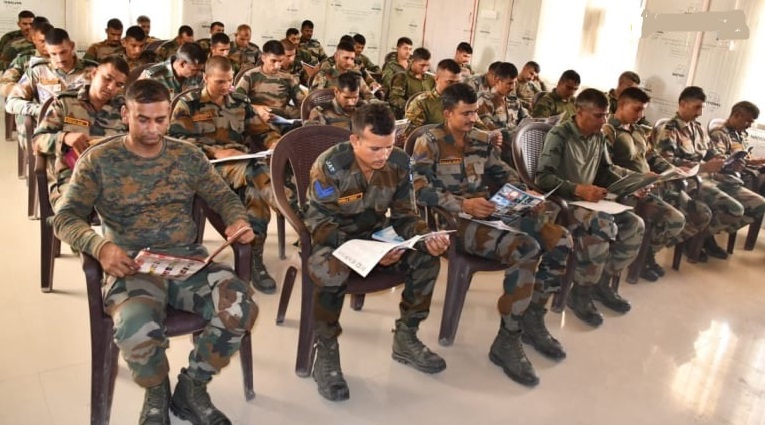 Agneepath Scheme replaced with Sainik Samman Scheme 2024, Defence Minister Rajnath Singh Relaunched Agniveer Scheme
Agneepath Scheme replaced with Sainik Samman Scheme 2024, Defence Minister Rajnath Singh Relaunched Agniveer Scheme
-
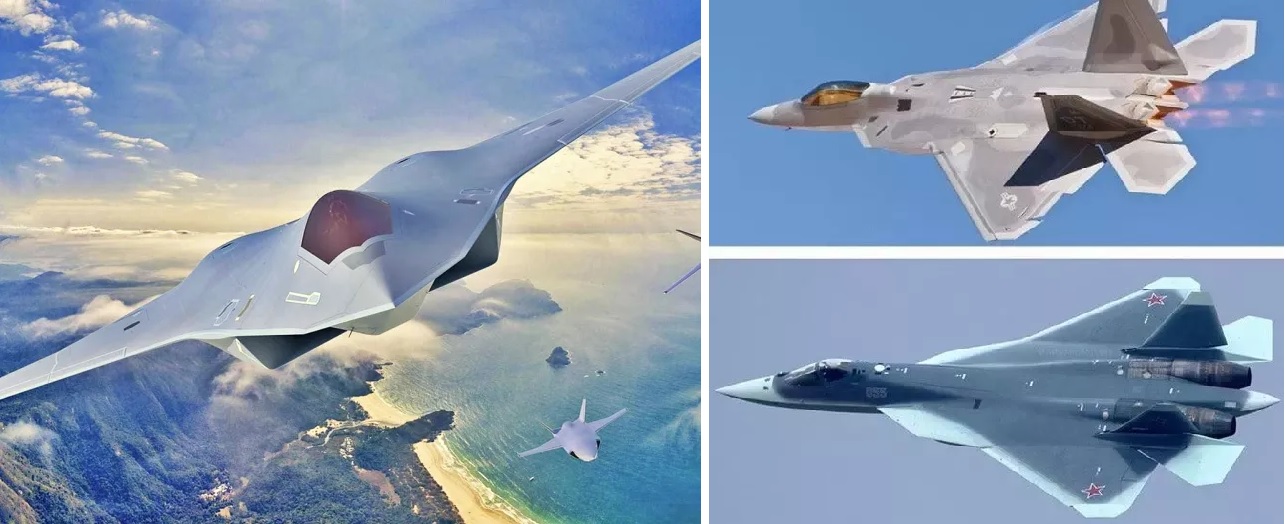 Key Differences Between 5th vs. 6th Generation Fighter Jets
Key Differences Between 5th vs. 6th Generation Fighter Jets
-
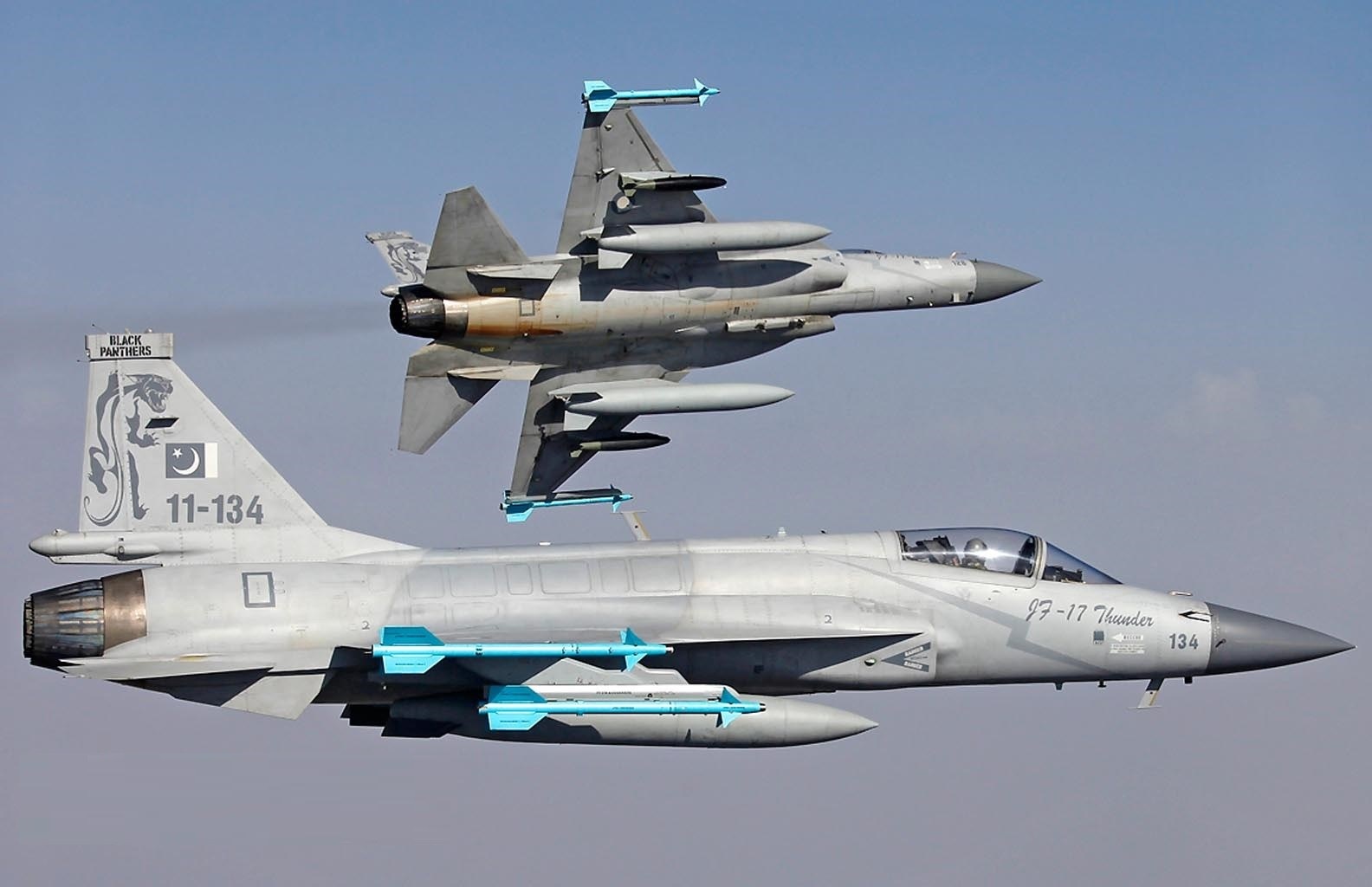 Pakistan Air Force to Unveil Stealth-Enhanced JF-17 Block 4 Fighter Jet by 2028
Pakistan Air Force to Unveil Stealth-Enhanced JF-17 Block 4 Fighter Jet by 2028
-
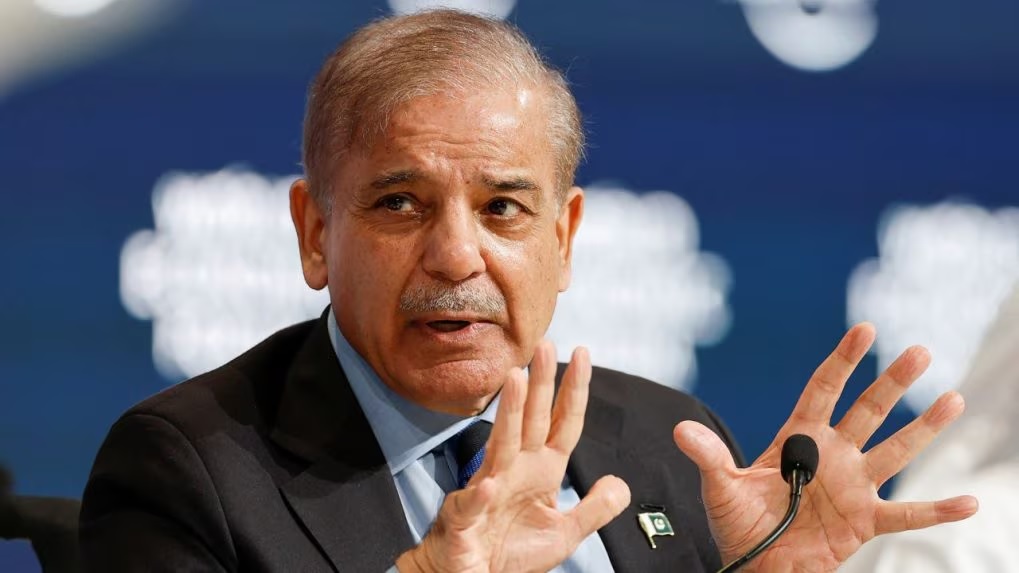 Pakistan Announces 15% Increase in Defence Budget for 2024-25 Amid Economic Crisis
Pakistan Announces 15% Increase in Defence Budget for 2024-25 Amid Economic Crisis
-
 India's TEDBF Program Takes Shape First Flight by 2028: Aiming for Naval Supremacy with Advanced Stealth and Technology
India's TEDBF Program Takes Shape First Flight by 2028: Aiming for Naval Supremacy with Advanced Stealth and Technology
-
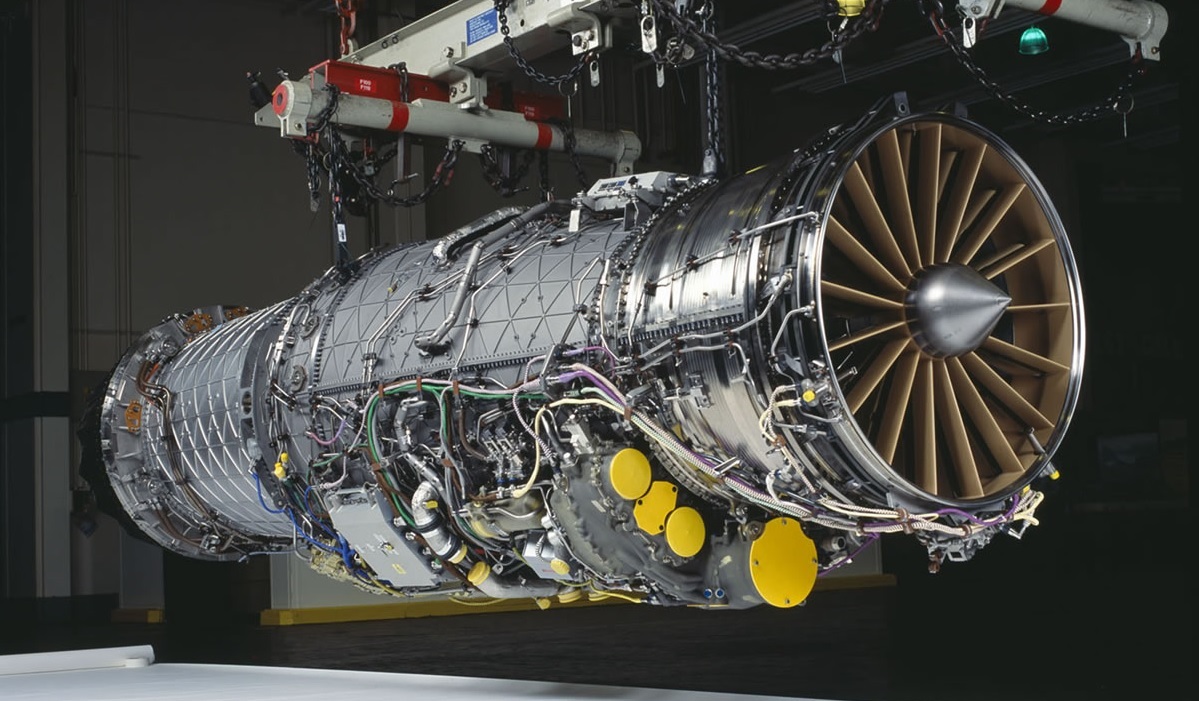 India’s AMCA Engine Decision: Safran vs. Rolls-Royce Final Expected by 2025
India’s AMCA Engine Decision: Safran vs. Rolls-Royce Final Expected by 2025
-
 What Would Happen if the USA Left NATO? A Comprehensive Analysis
What Would Happen if the USA Left NATO? A Comprehensive Analysis
-
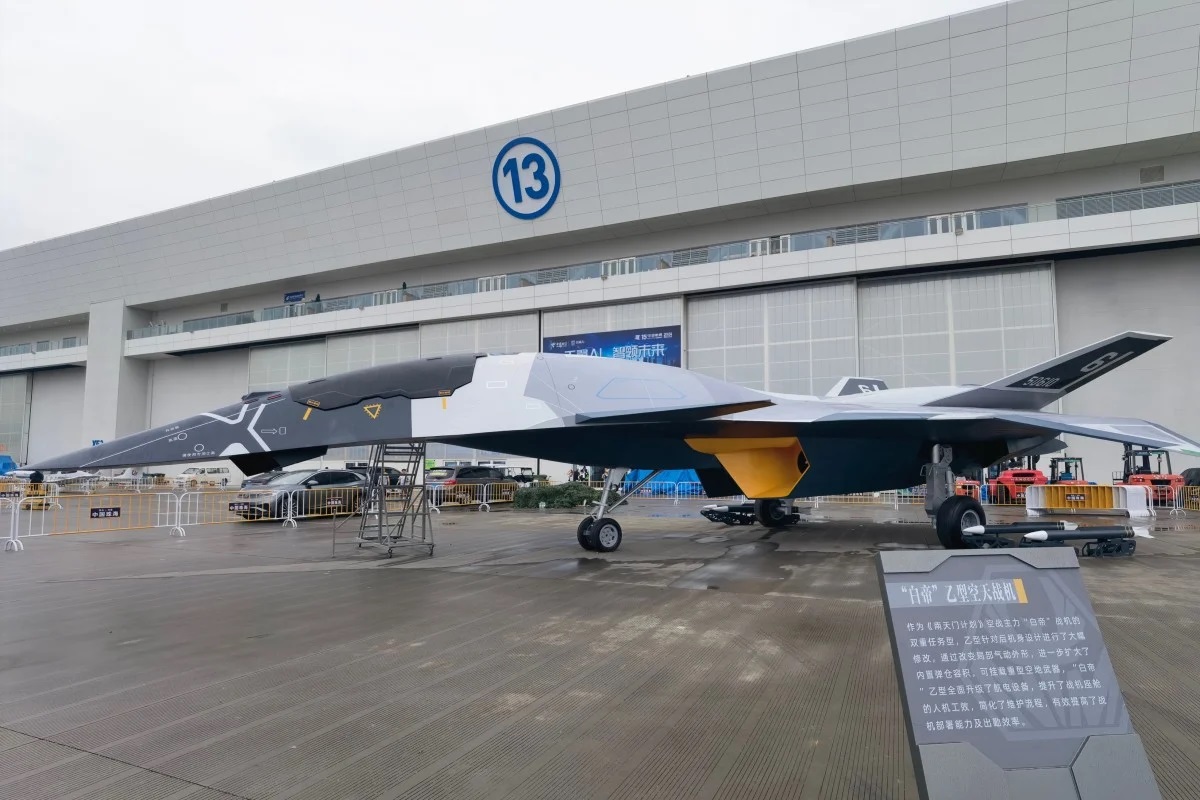 China Unveils the 6th-Generation “Baidi B-Type” Aerospace Fighter Concept
China Unveils the 6th-Generation “Baidi B-Type” Aerospace Fighter Concept
Top Trending in 4 Days
-
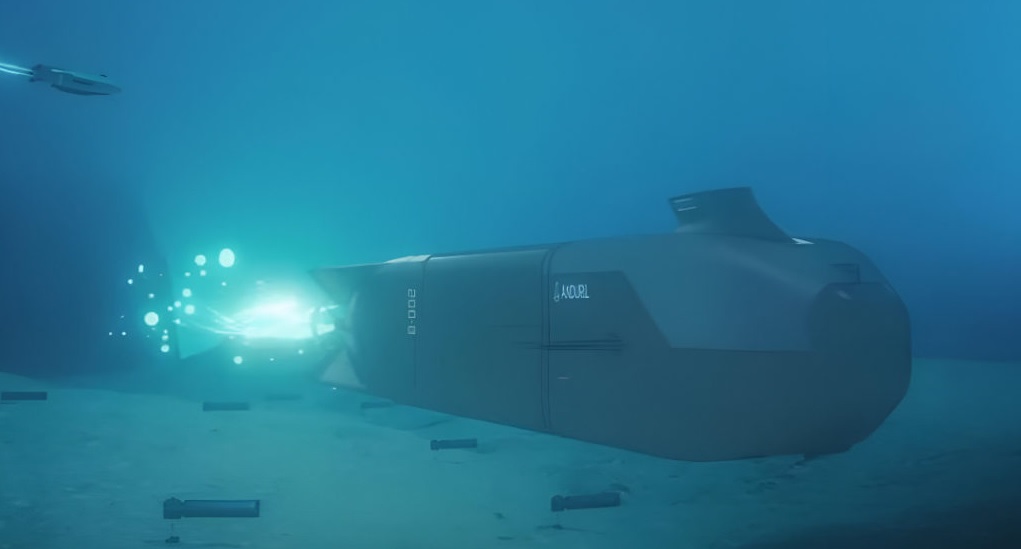 AI-Driven Submarine Hunt Could End Era of “Invisible” Underwater Threats
AI-Driven Submarine Hunt Could End Era of “Invisible” Underwater Threats
-
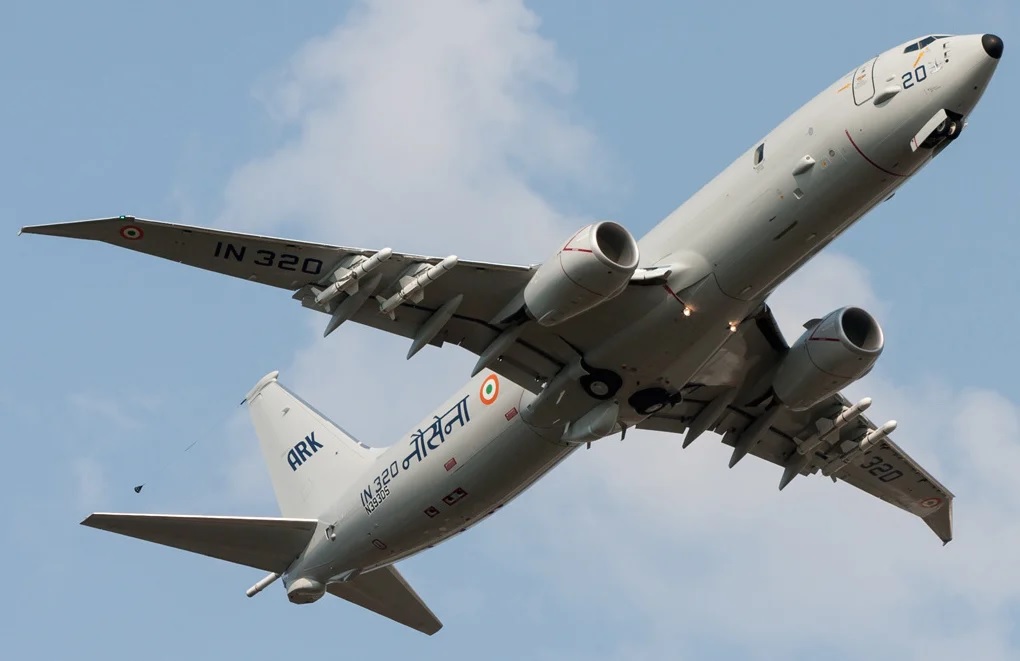 U.S. Delegation to Visit India for $4 Billion P-8I Aircraft Deal Talks
U.S. Delegation to Visit India for $4 Billion P-8I Aircraft Deal Talks
-
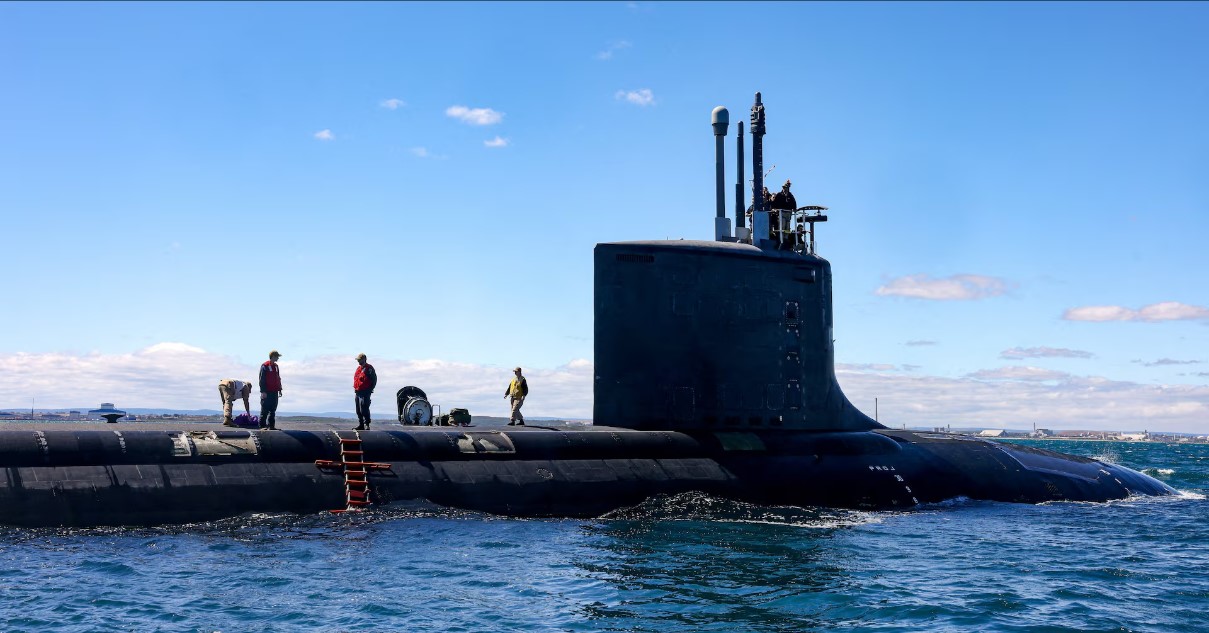 Australia Commits A$12 Billion to Upgrade Henderson Precinct as AUKUS Submarine Hub
Australia Commits A$12 Billion to Upgrade Henderson Precinct as AUKUS Submarine Hub
-
 Defence Ministry Reviews IAF's Proposal for 114 'Made in India' Rafale Fighter Jets
Defence Ministry Reviews IAF's Proposal for 114 'Made in India' Rafale Fighter Jets
-
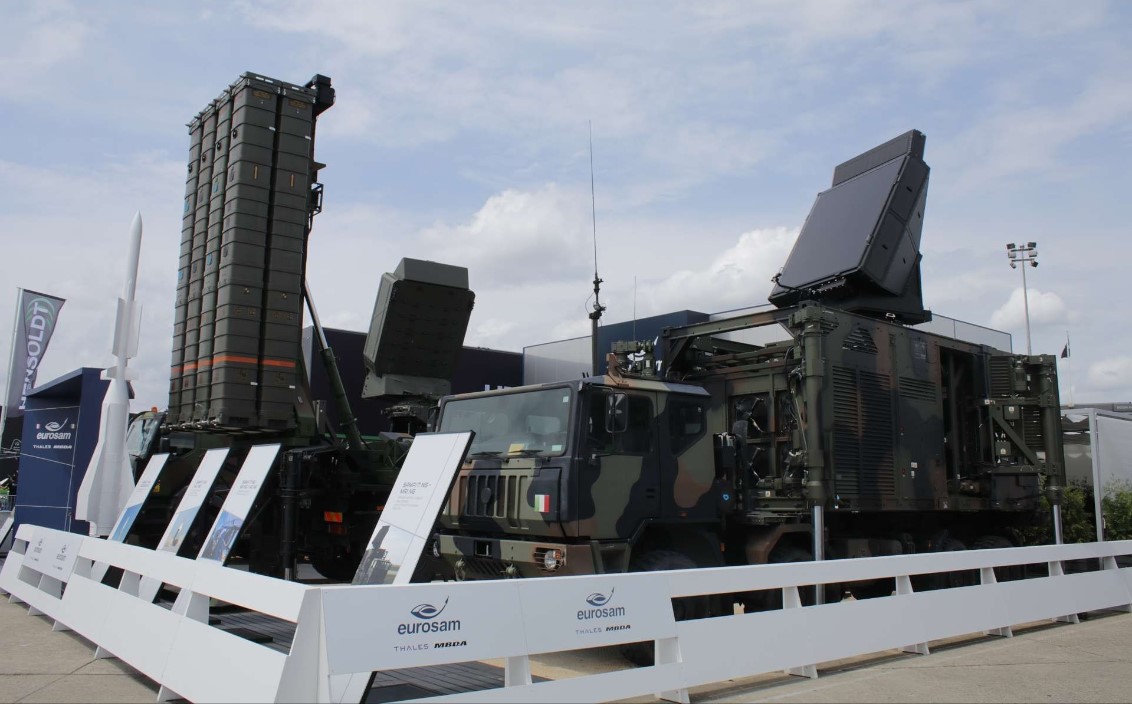 Denmark to Invest $ 9.1 Billion in European Air and Missile Defense Systems
Denmark to Invest $ 9.1 Billion in European Air and Missile Defense Systems
-
 China's AI-Driven Missile Production Line Achieves Over 100 Missiles Per Day
China's AI-Driven Missile Production Line Achieves Over 100 Missiles Per Day
-
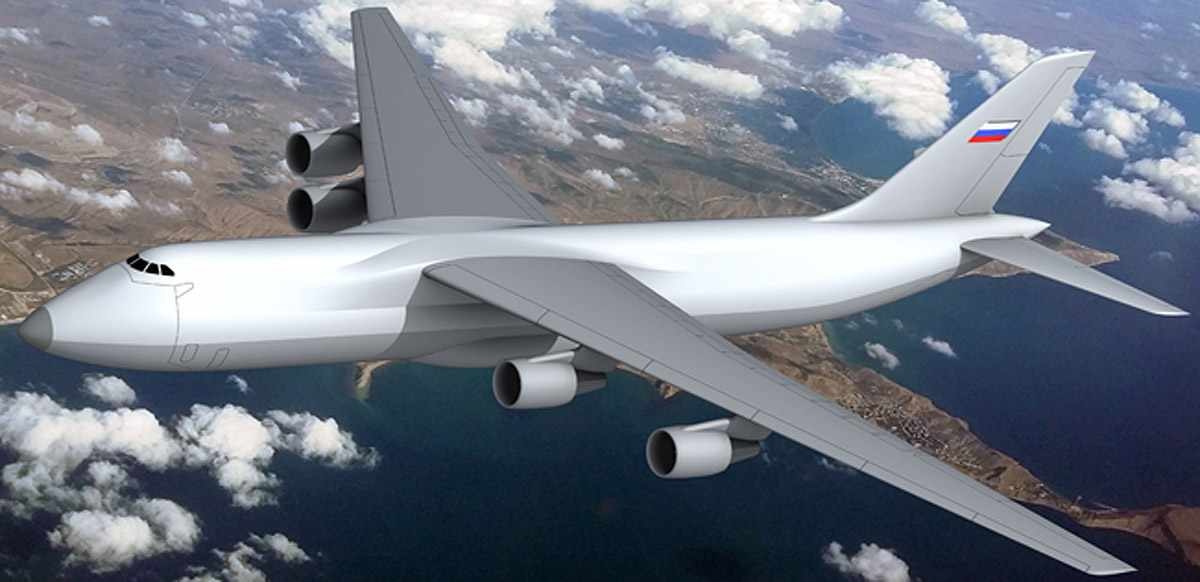 India May Be Invited to Co-Develop Russia’s Il-100 “Slon” as Il-76 Fleet Wanes
India May Be Invited to Co-Develop Russia’s Il-100 “Slon” as Il-76 Fleet Wanes
-
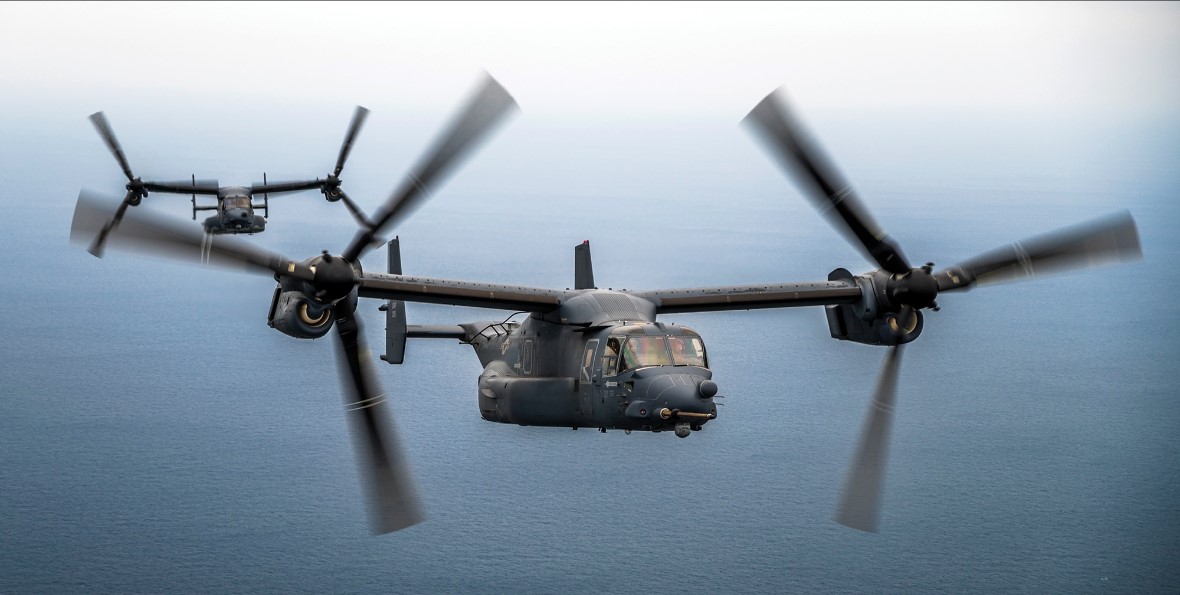 U.S Air Force Refines Plan for New Special Operations “Power Projection Wing” at Davis-Monthan
U.S Air Force Refines Plan for New Special Operations “Power Projection Wing” at Davis-Monthan
